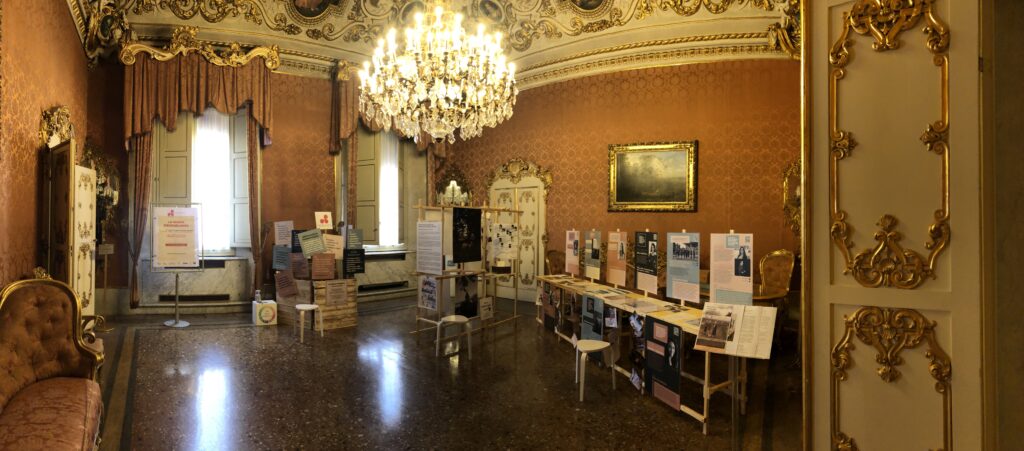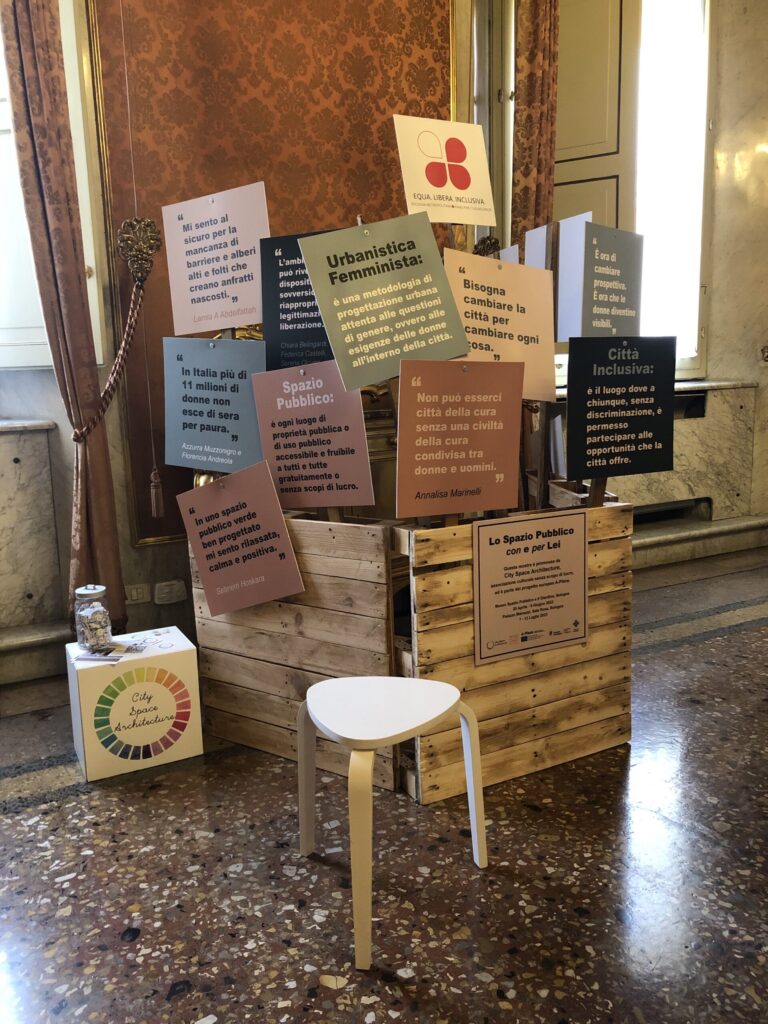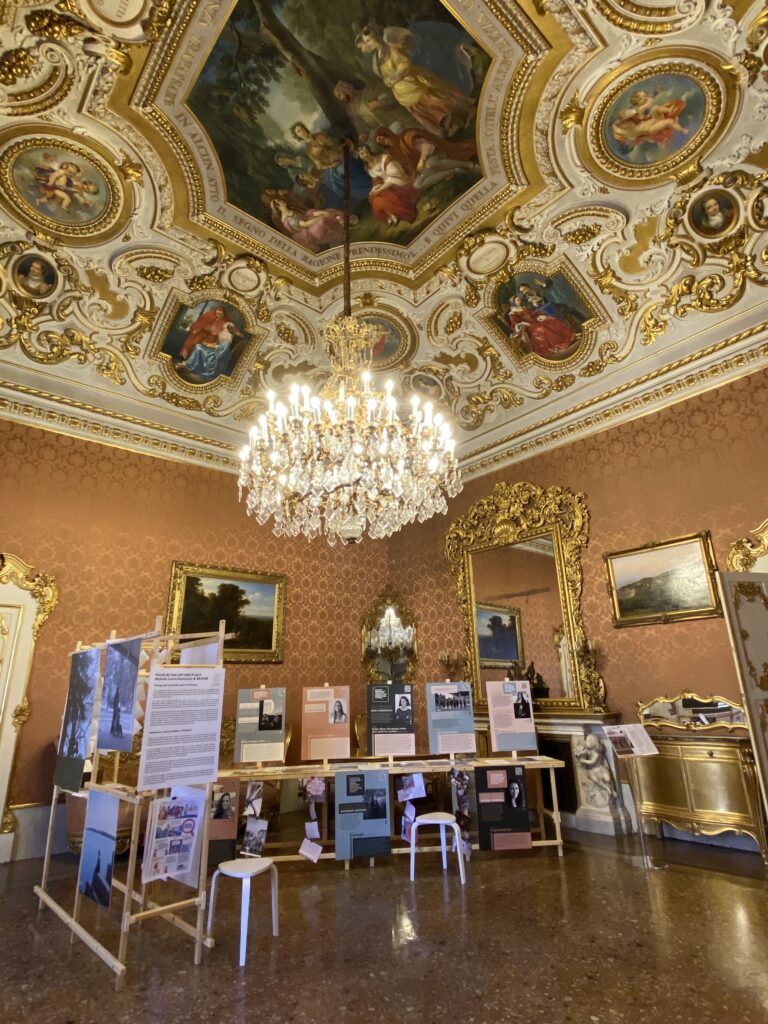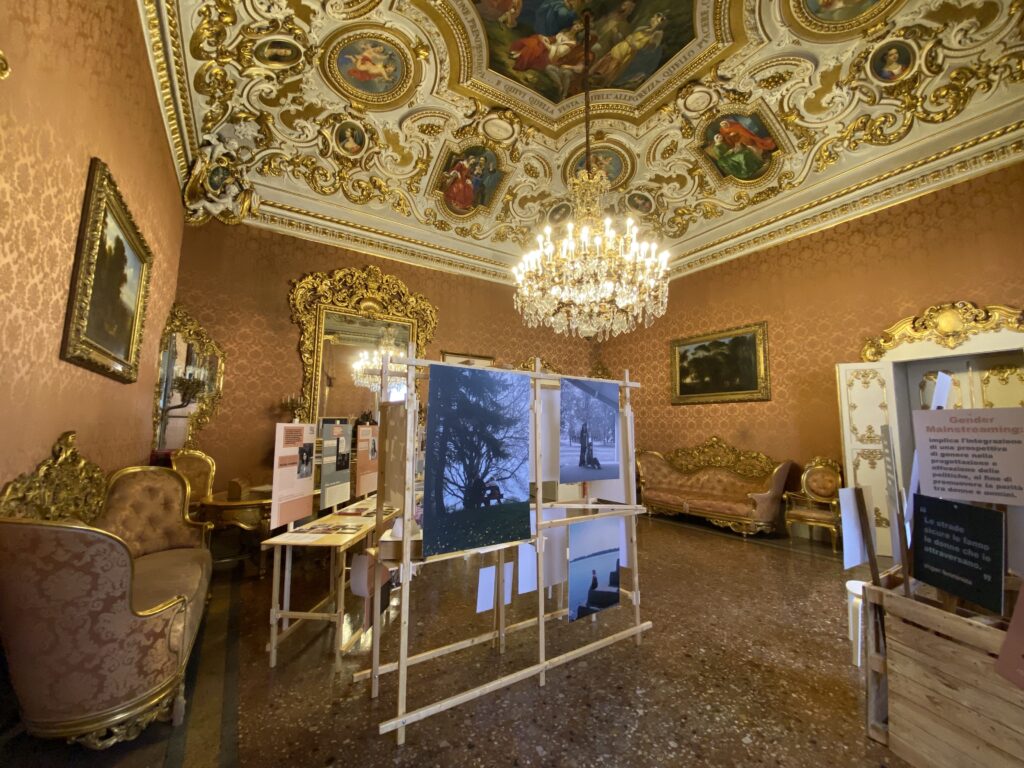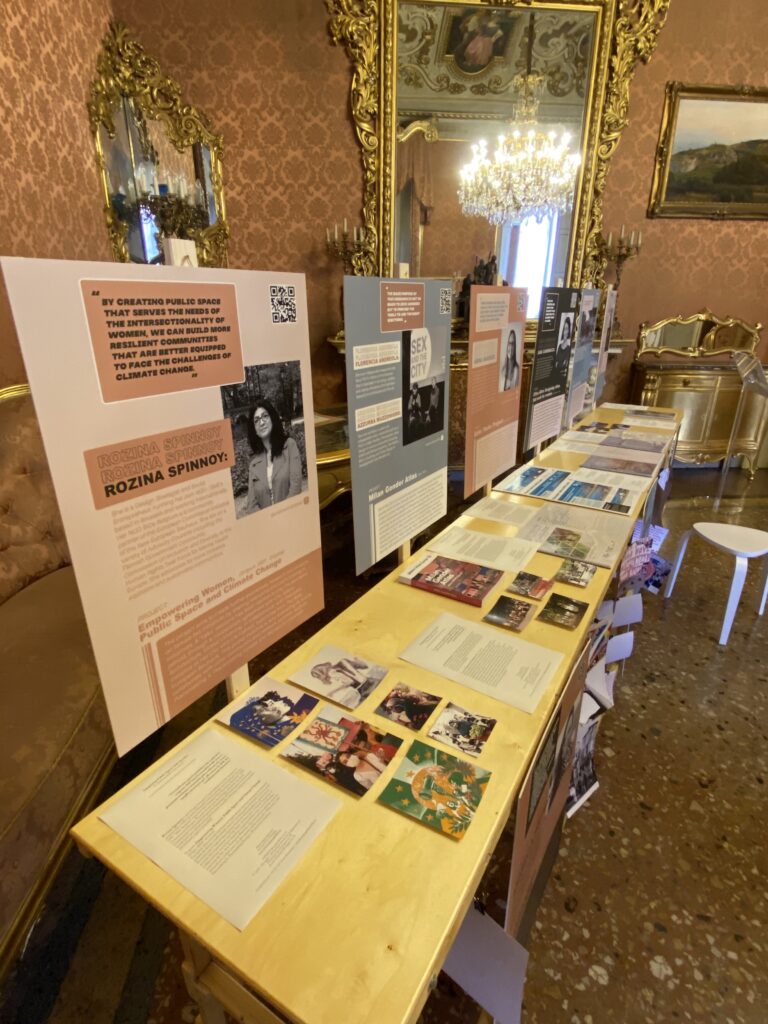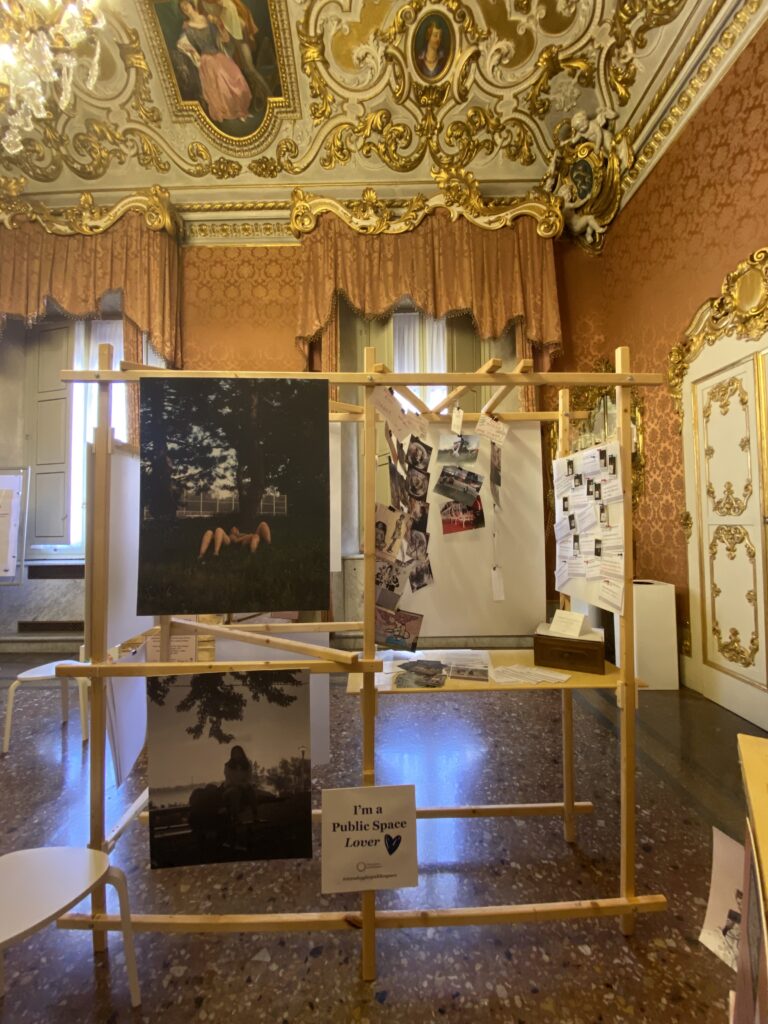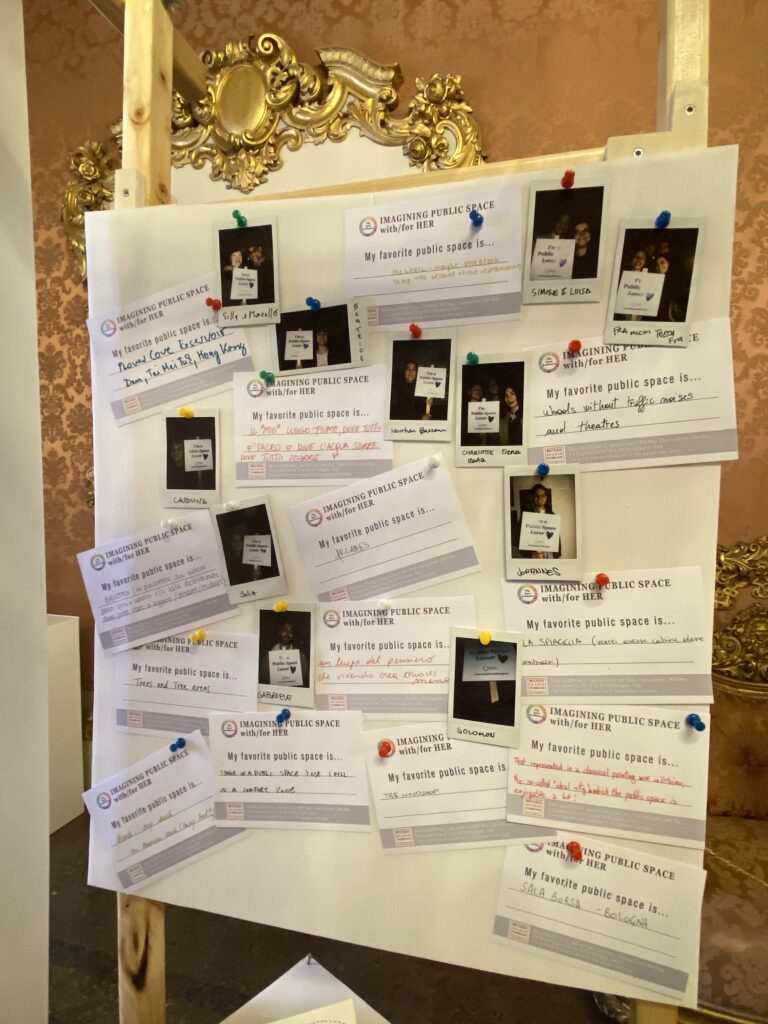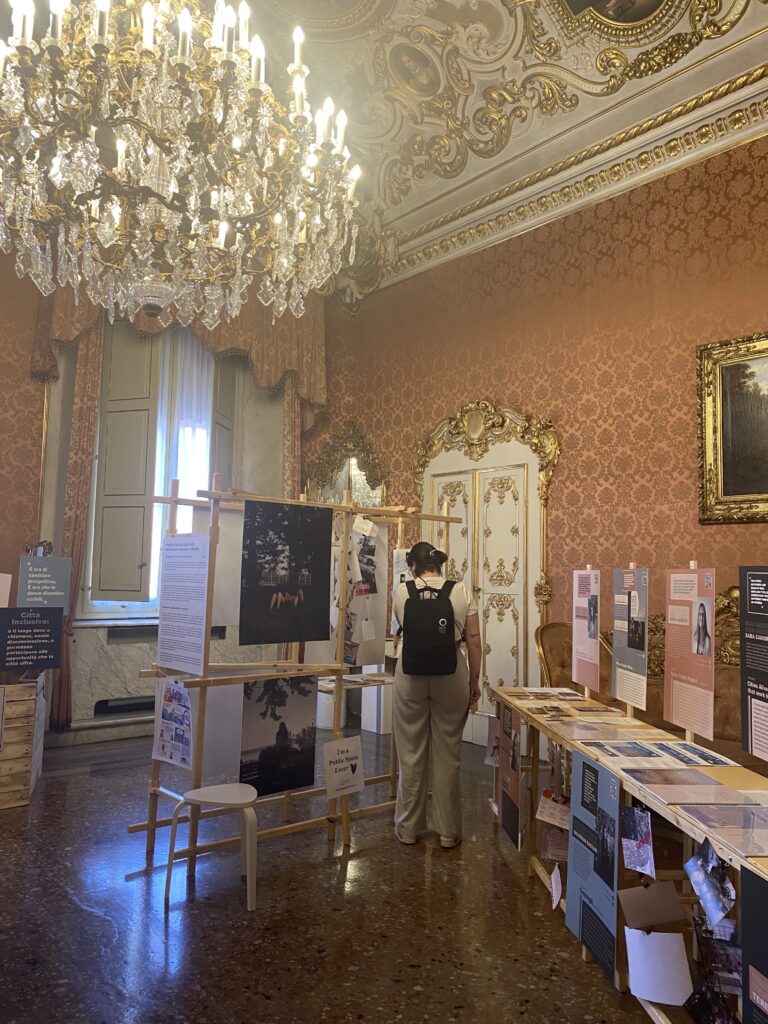Imagining Public Space with/for Her
curated by Carolina Anderson, Beatrice Ricci and Luisa Bravo
On Thursday 20th April 2023 the exhibition Imagining Public Space with/for Her, curated by Carolina Anderson, Beatrice Ricci and Luisa Bravo, opened at Museo Spazio Pubblico in Bologna, the artistic headquarters of the cultural association City Space Architecture.
Presented in the framework of international initiatives developed by City Space Architecture – whose focus is to promote public space culture, through art and architecture, in order to build more inclusive and sustainable cities – the exhibition intended to activate a crucial debate about public space analysed from a gender perspective, giving (ideal and physical) space to world-wide projects that stress the urgency of re-thinking the city and its public spaces with and for women. It was intended to open a specific discussion that it is strongly intertwined with the broader and certainly most debated challenge of accessibility and inclusiveness of public spaces.
The radical question is: who does public space really belong to? who is public space designed for?
One of the main problems of cities is that they are often designed by and for a single subject: man. Women have rarely been taken into consideration as active subjects in the design and use of the city and its public spaces.
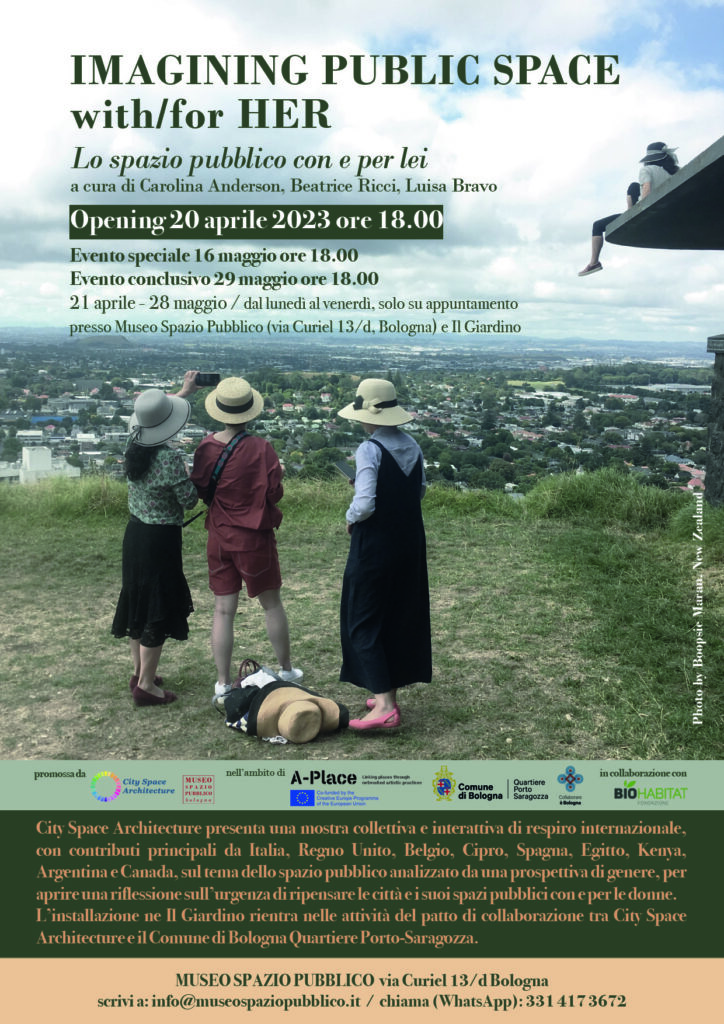
“Imagining Public Space with/for Her” makes clear how it is still necessary and urgent to talk about public space attentive to the needs of women. For this purpose the exhibition was conceived not as a canonical display of contents, but as a way to collect materials through a process of co-creation, giving visibility to several leading professional figures who are dealing with this issue, selected and invited by City Space Architecture.”Imagining Public Space with/for Her makes clear how it is still necessary and urgent to talk about public space attentive to the needs of women. For this purpose the exhibition was conceived not as a canonical display of contents, but as a way to collect materials through a process of co-creation, giving visibility to several leading professional figures who are dealing with this issue, selected and invited by City Space Architecture.
The exhibition took place in two different venues: in the indoor space of Museo Spazio Pubblico and in the outdoor space of the adjacent public garden, named as Il Giardino, that City Space Architecture is managing after signing a cooperation agreement with the Municipality of Bologna, in the framework of the Regulation on collaboration between citizens and the city for the care and regeneration of urban commons.
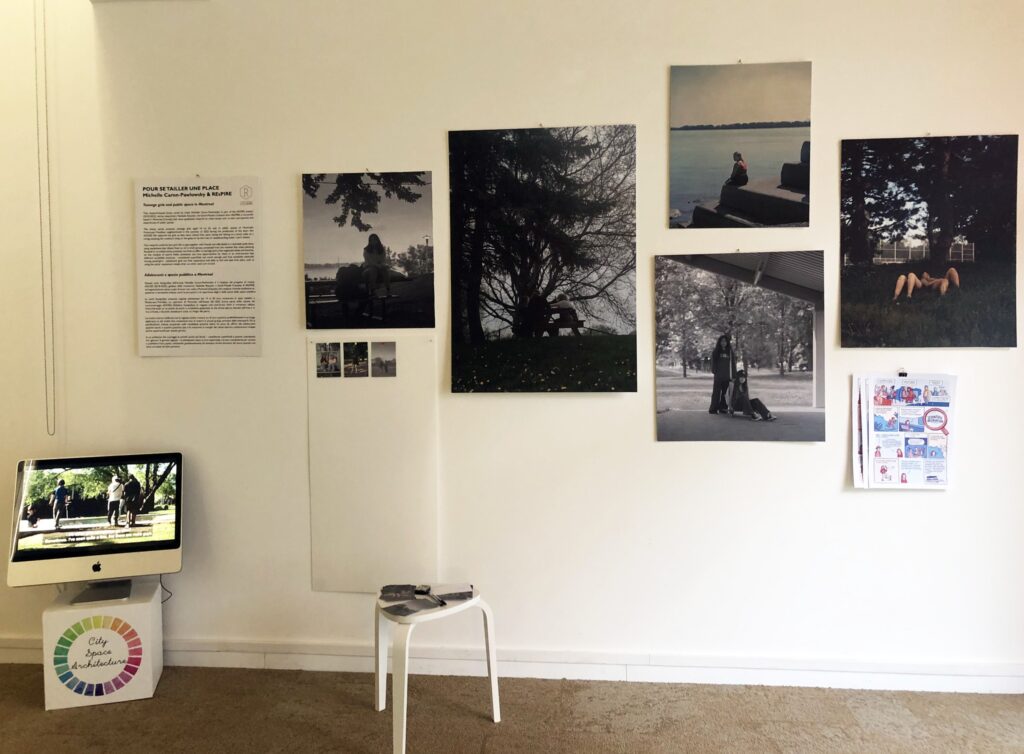
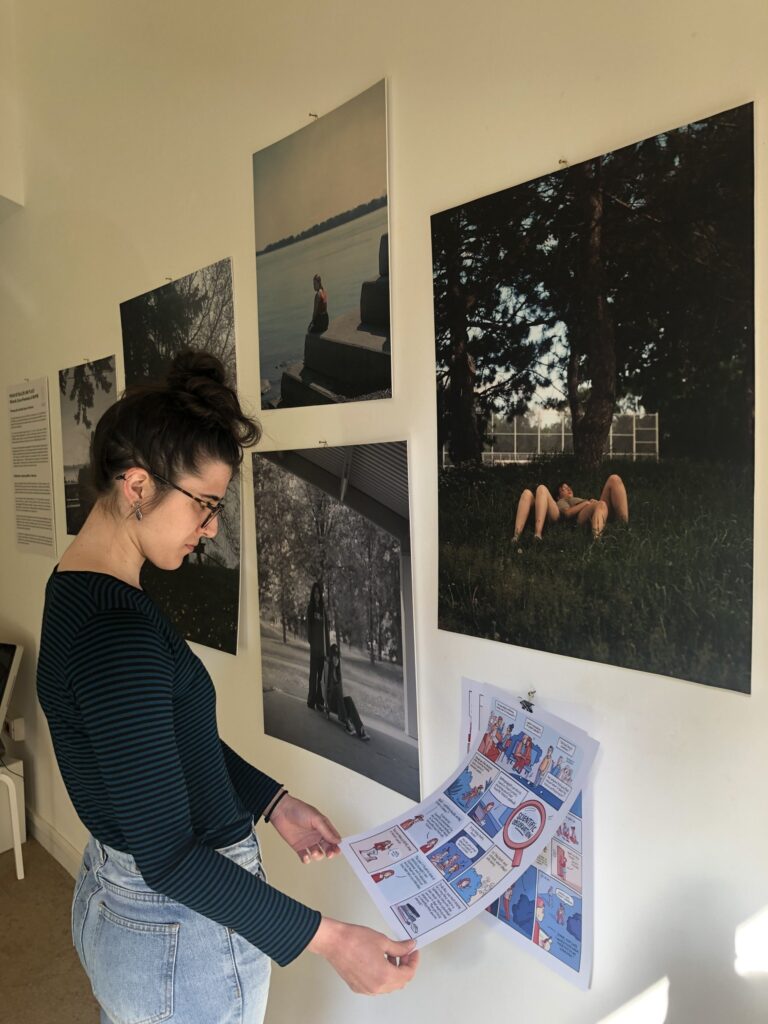
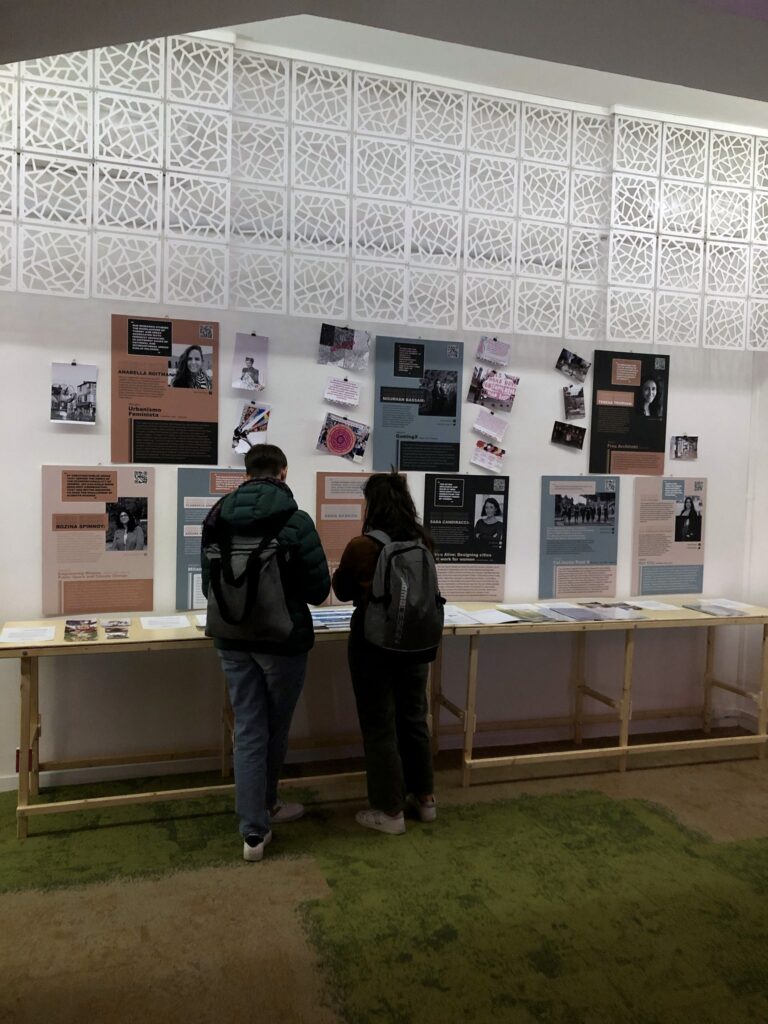
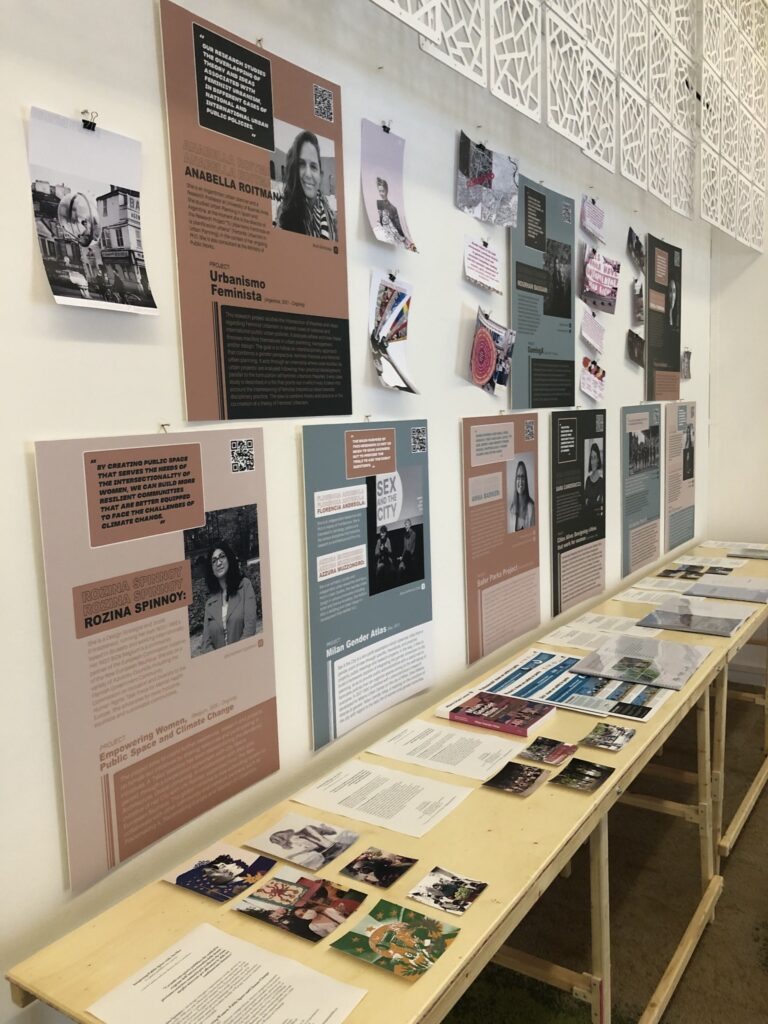
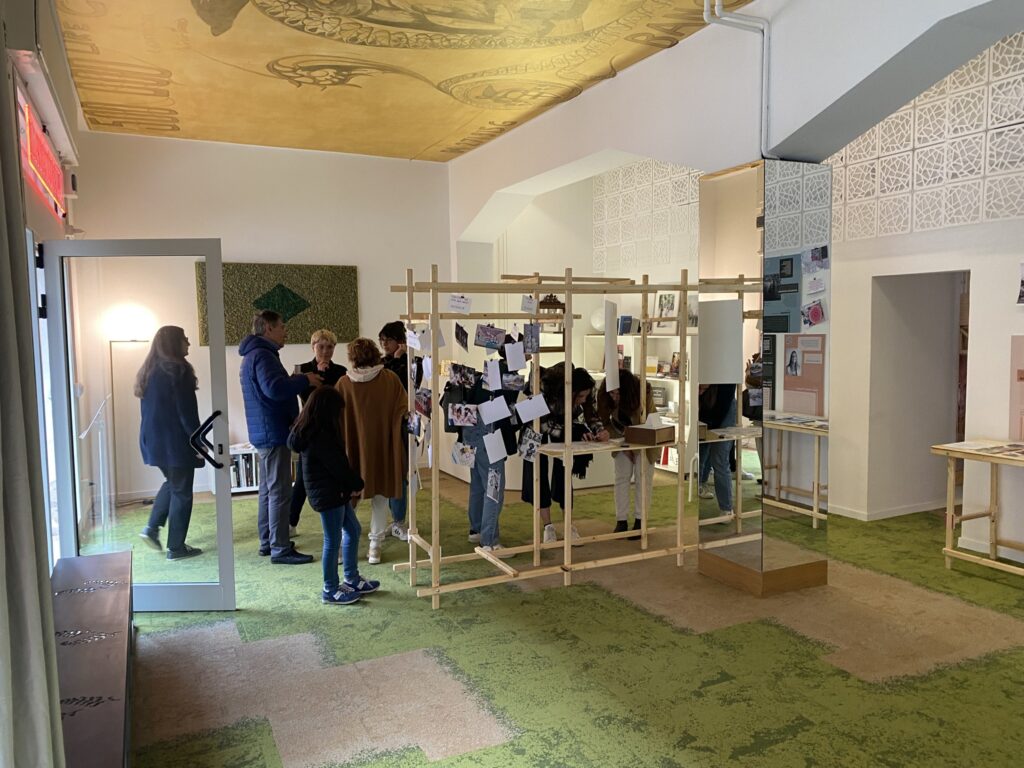
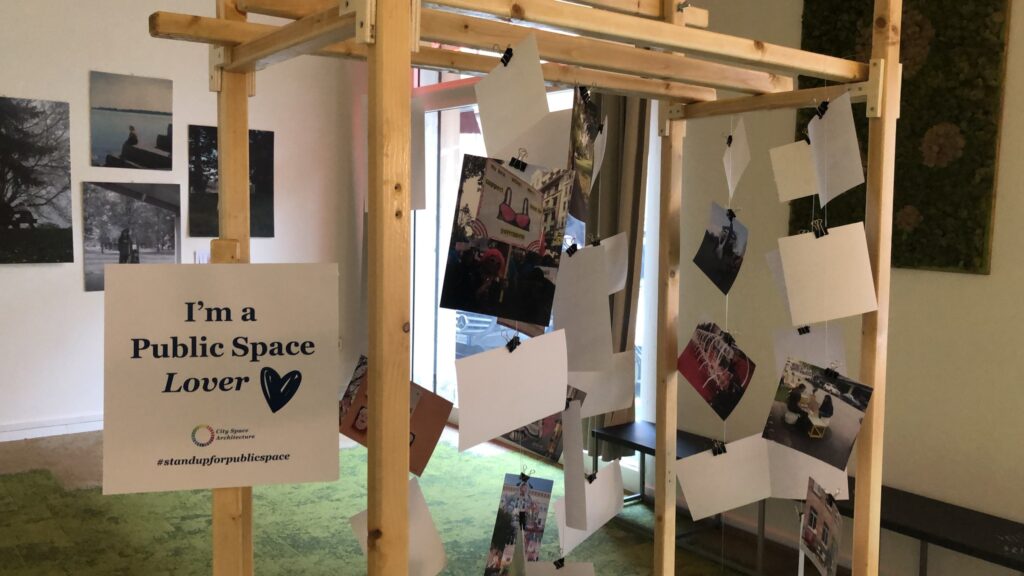
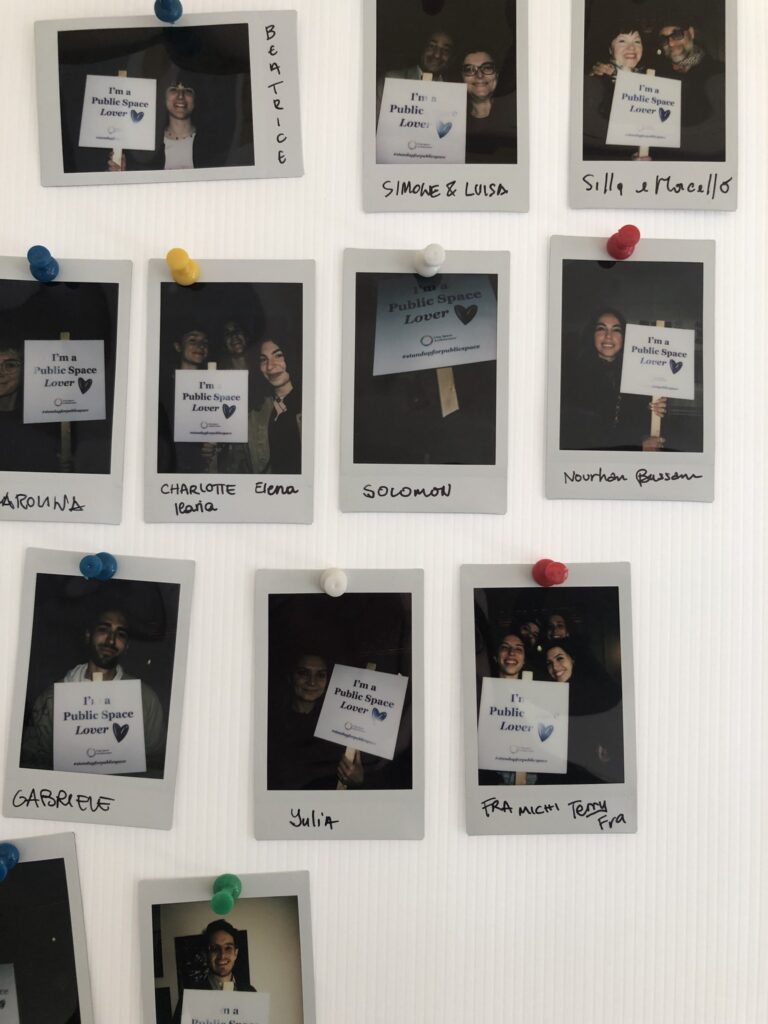
Garden Installation
The exhibition in the outdoor space of Museo Spazio Pubblico, the adjacent public garden named as Il Giardino, was animated by a series of posters in the form of definitions and quotations, presented as strong statements (in Italian) to local residents and users. This way passers-by are asked to be curious and reflect on those statements, while entering and “inhabiting” the garden.



Photographic project
Pour se tailler une place
Michelle Caron-Pawlowsky & REsPIRE (Nathalie Boucher, Sarah Mode Cossete)
Montreal, Canada (2018 – 2022)
The photographic project “Pour se tailler une place” by Michelle Caron-Pawlowsky is part of the ADOES project (2018-2022), led by researchers Nathalie Boucher and Sarah-Maude Cossette from REsPIRE, a non-profit based in Montreal (Canada) that does qualitative research on urban issues, such as users perceptions and experiences of public spaces. The photo series presents teenage girls aged 14 to 20, met in public spaces of Montreal’s Pointe-aux-Trembles neighborhood in the summer of 2022 during the production of the short film ADOES. The point of view of teenager girls in public spaces greatly enriches the discussion, too often focused on the “macro-category” of adult women.
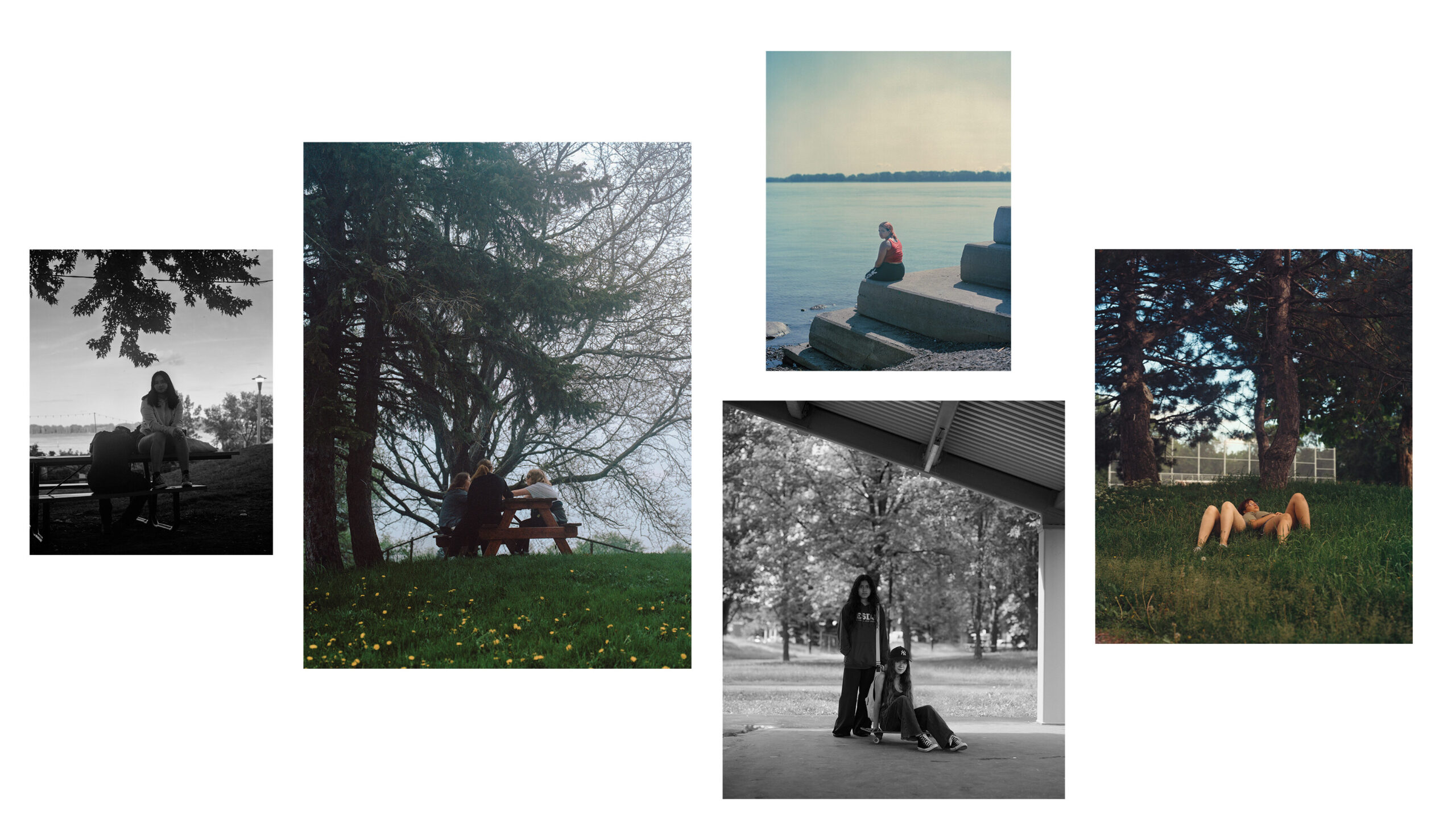
We captured the girls as they were, where they were: sitting and talking on a picnic table or a swing, enjoying the outdoors lying on the grass or by the river, or skateboarding under a park shelter. Our research confirms that girls like to get together with friends and talk, ideally in a secluded, quiet place, using equipment that allows them to sit in small groups, protected from the weather. But urban planning, focused on so-called active practices, has little to offerto teenage girls: a few neglected tables and benches, on the margins of sports fields, constitute too rare opportunities for them. In an environment that disfavors sociability practices – considered superficial, not active enough, and thus unhealthy, especially among youth/girls – adolescent girls use their experience and skills to find and take their place, such as using the parks’ equipment wisely when no other users are around.”
Nathalie Boucher and Sarah-Maude Cossette
The project is completed by a video which collects interviews to teen girls and their use of public space in Montreal. This video was also shortlisted for the 2022 edition of the Urban Visions Film Festival, promoted by City Space Architecture.
A comic strip – translated from French into English expressly for the exhibition in Bologna – was also part of the ethnographic method used by the researcher to explain how adolescent girls have a different experience of occupying public spaces than older women or boys their age.
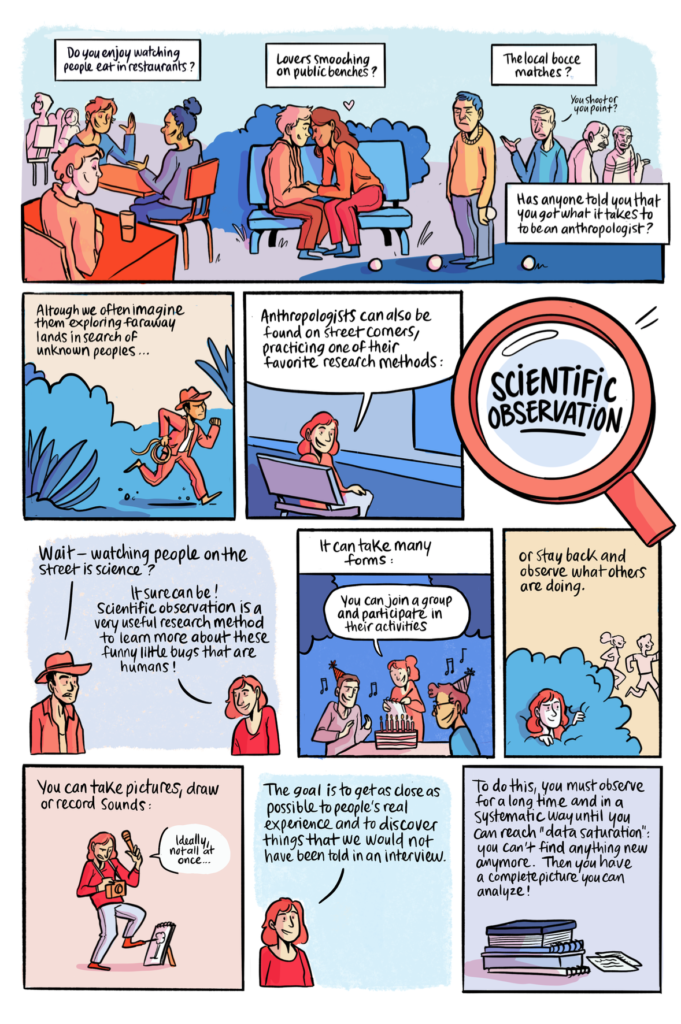
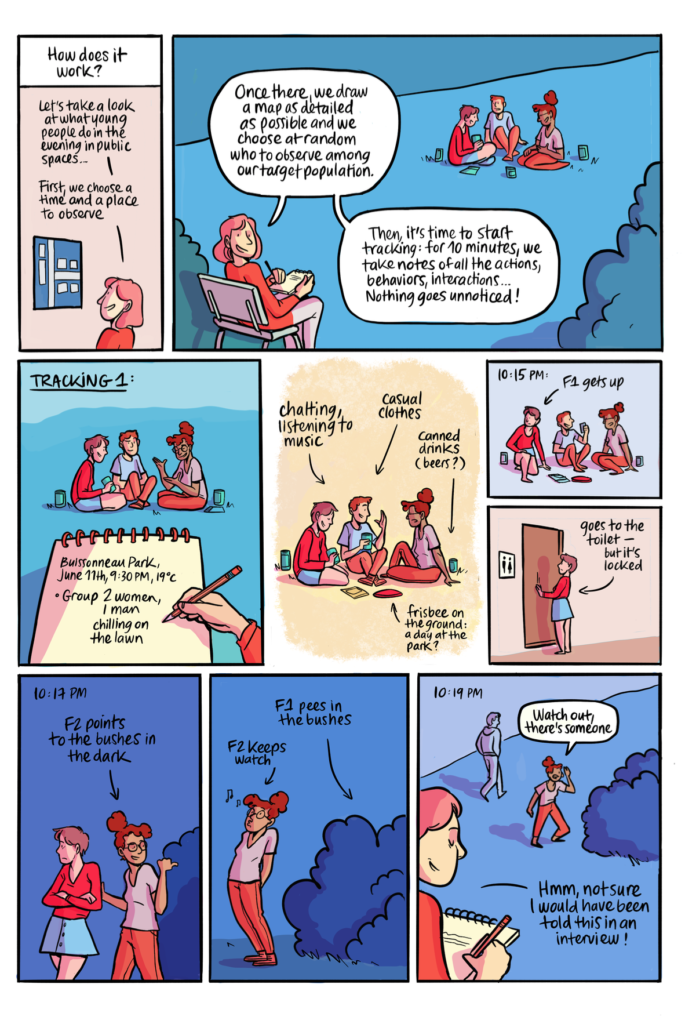
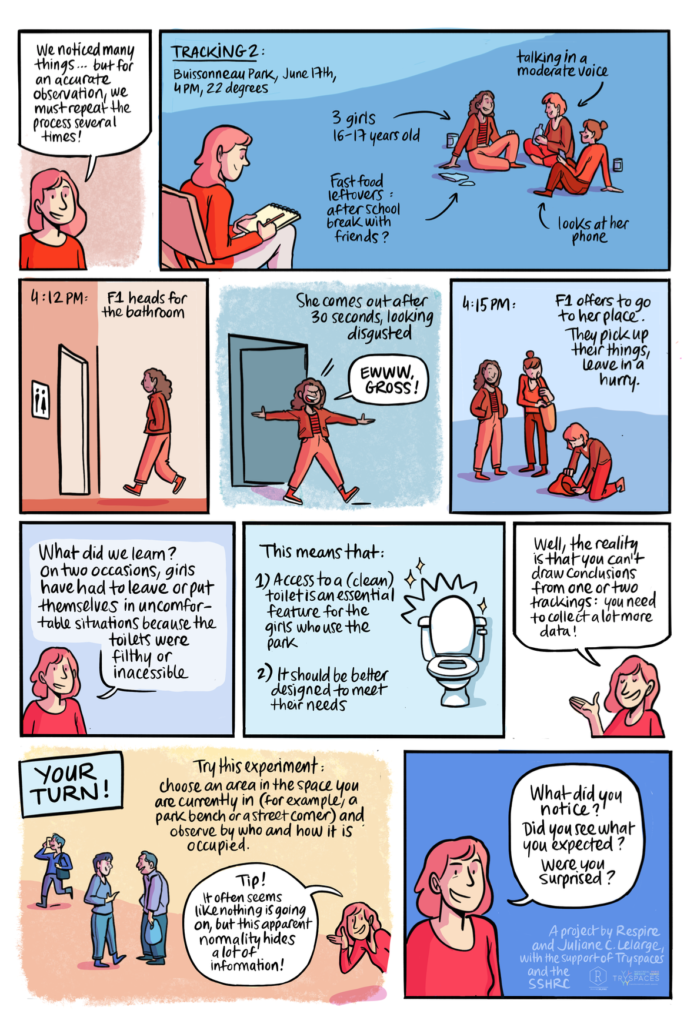
These postcards were part of the ADOES project: people were asked what they do in green public spaces.
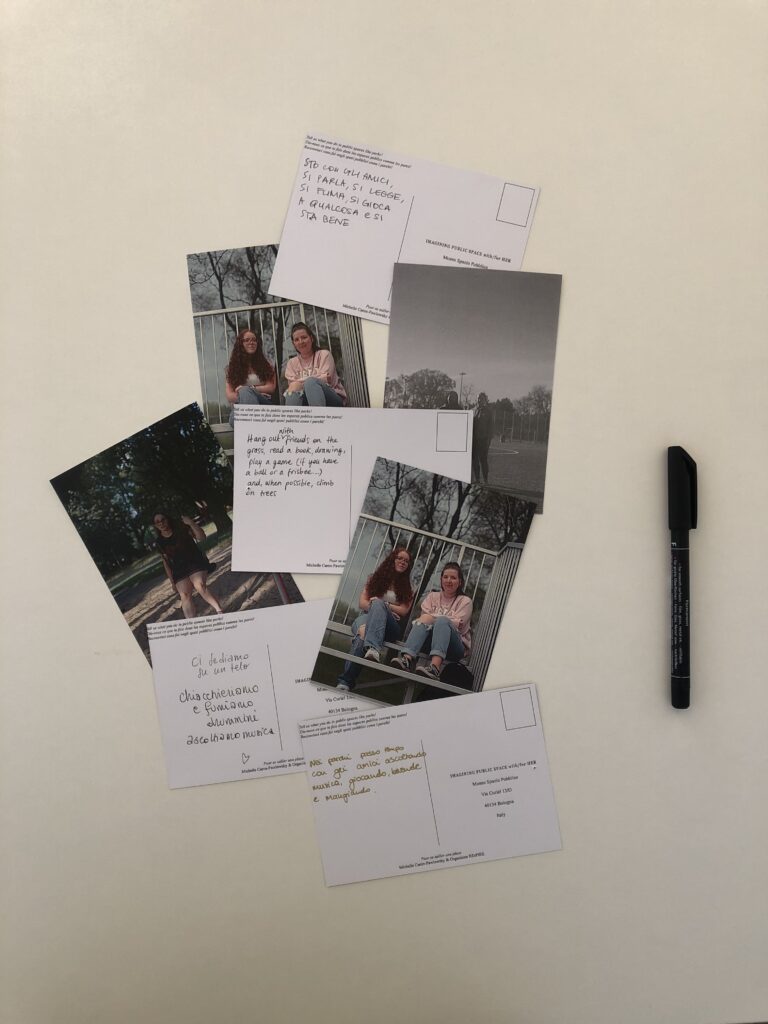
Invited projects
City Space Architecture invited several women to showcase their research projects, case studies on cities, exhibitions, reports and educational activities with the intention to highlight how ensuring the equal participation of women in the design and use of public space is essential to build more accessible and inclusive cities for all.
This part of the exhibition was a research output aimed at stimulating further research and reading for local visitors in Bologna.
Contents related to each project was available for consultation but could also be downloaded via QRcode.
1. Anna Barker / Safer Parks Project
United Kingdom (2022)
“When women and girls feel unsafe, they are less likely to use, enjoy and benefit from parks, particularly when alone and after dark.“
Anna Barker, University of Leeds, United Kingdom
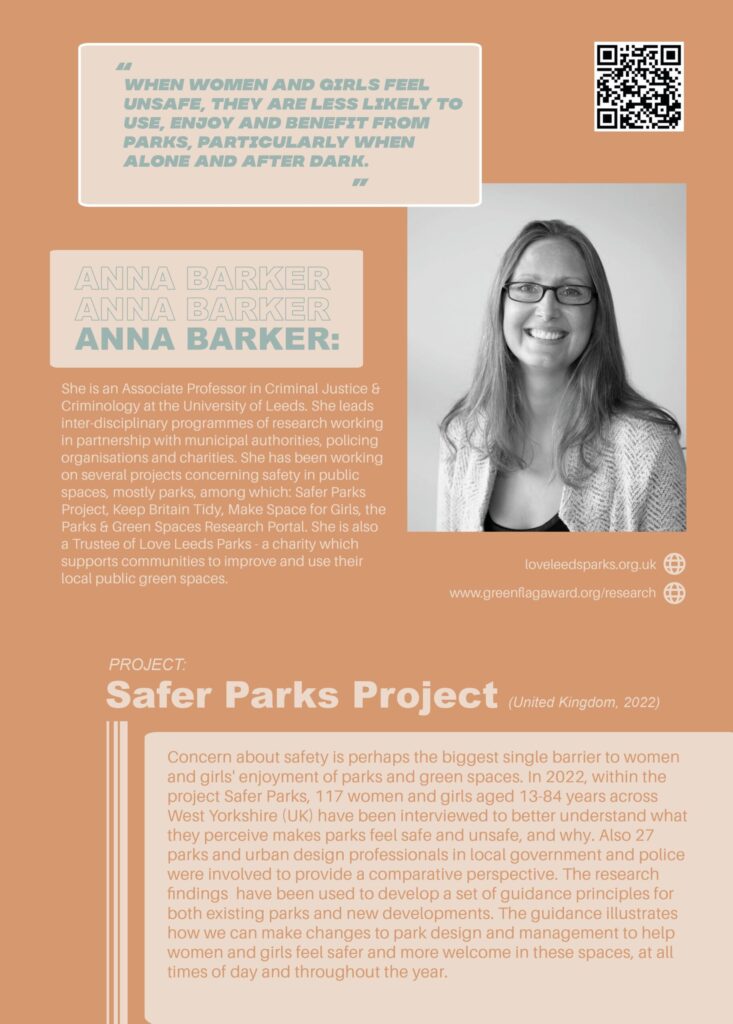
Read more on Safer Parks project:
Download the Safer Parks project report here.
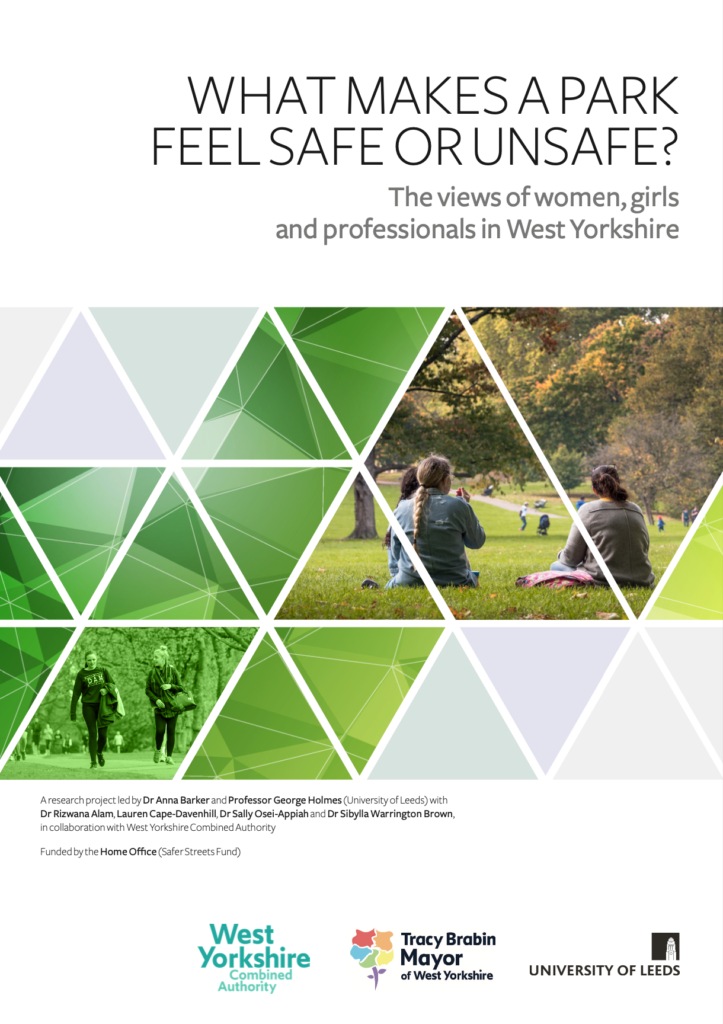
2. Sara Candiracci / Cities Alive: Designing cities that work for women
United Kingdom, 2022
“Too often decisions are made by men who don’t fully understand the different needs of women”
Sara Candiracci, Associate Director in the Cities, Planning and Design, and Global Leader for Social Value and Equity at Arup
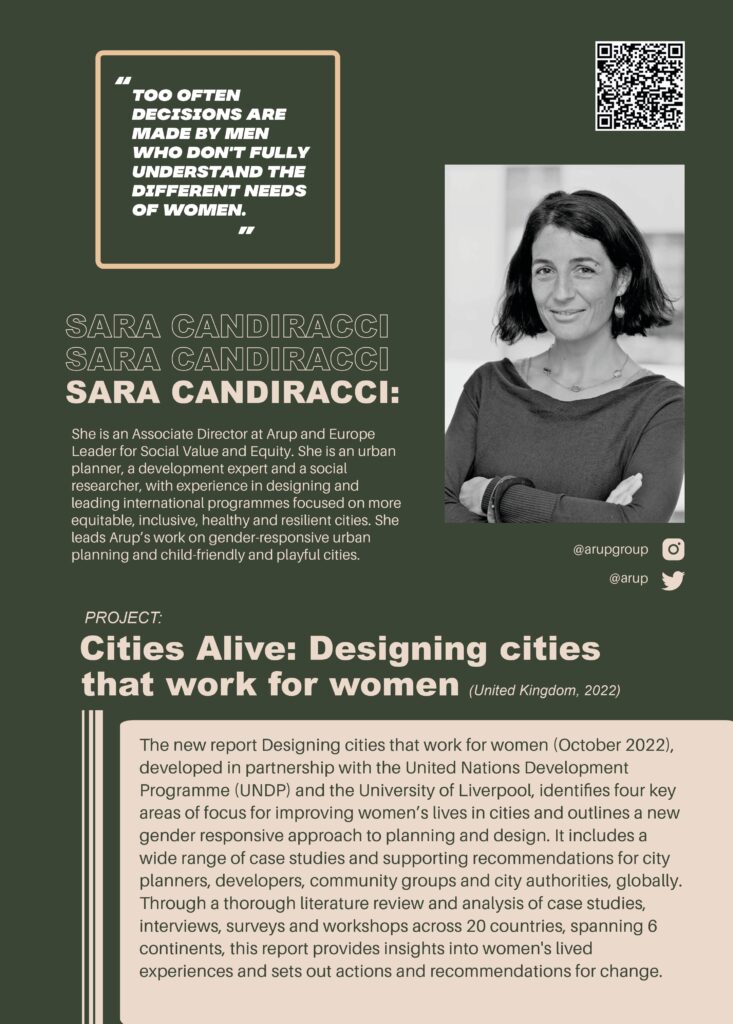
Download Cities Alive: designing cities that work for women report here.
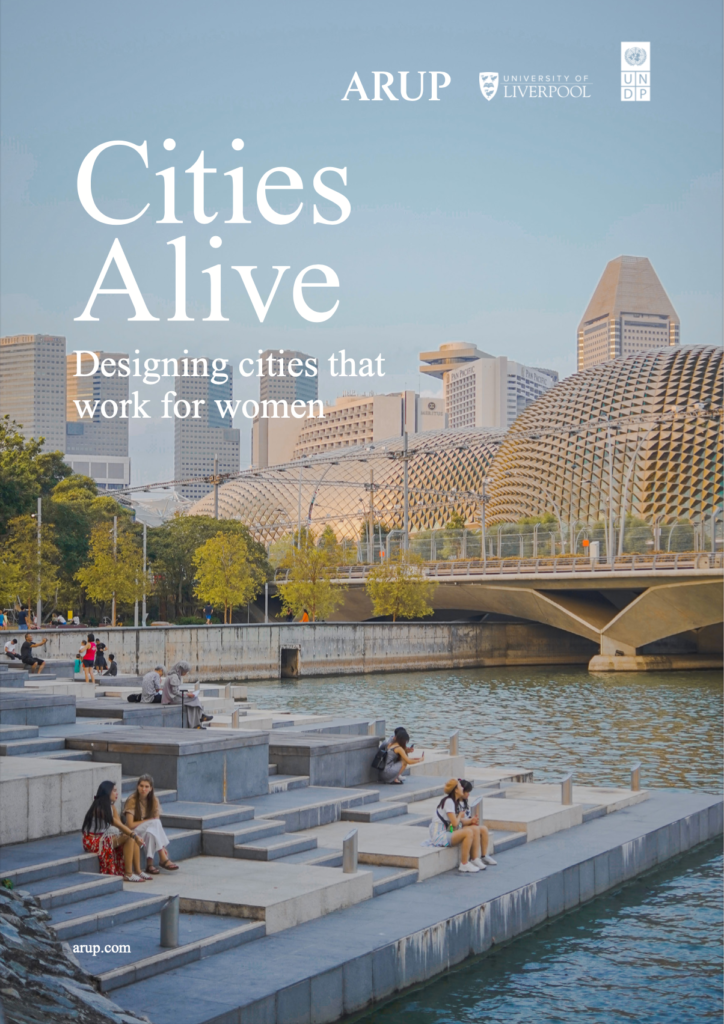
3. Florencia Andreola, Azzurra Muzzonigro / Milan Gender Atlas
Italy, 2021
The main purpose of this research is not so much to give answers but to provide the tools to ask the right questions.
Florencia Andreola, Azzurra Muzzonigro
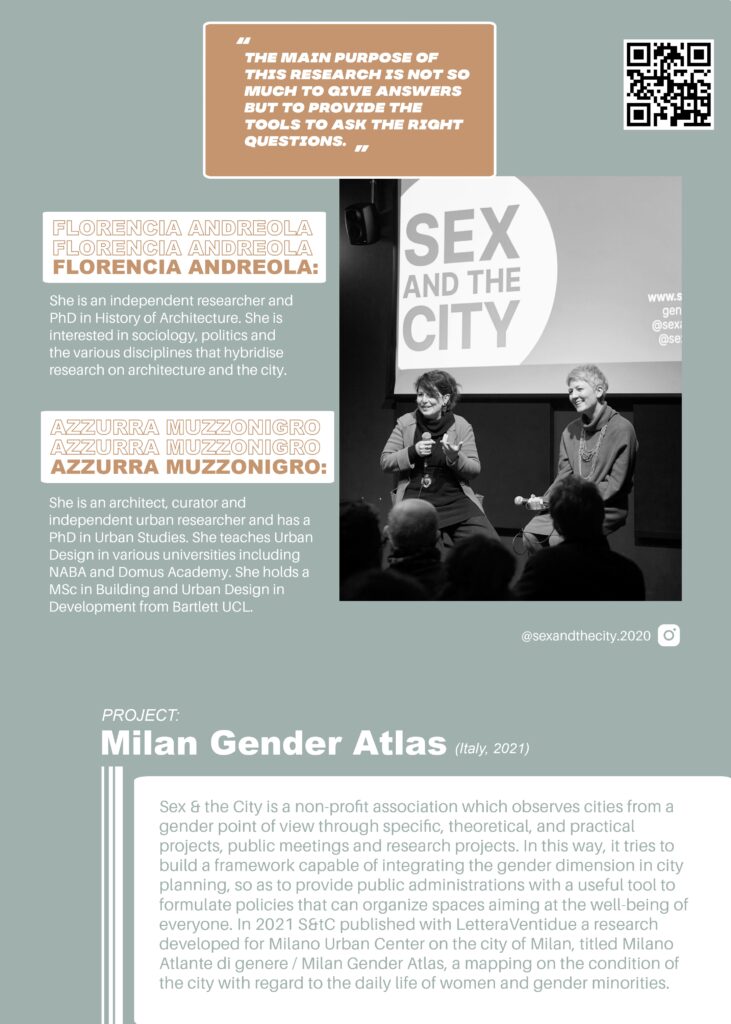
Read more about Sex and the City project here.
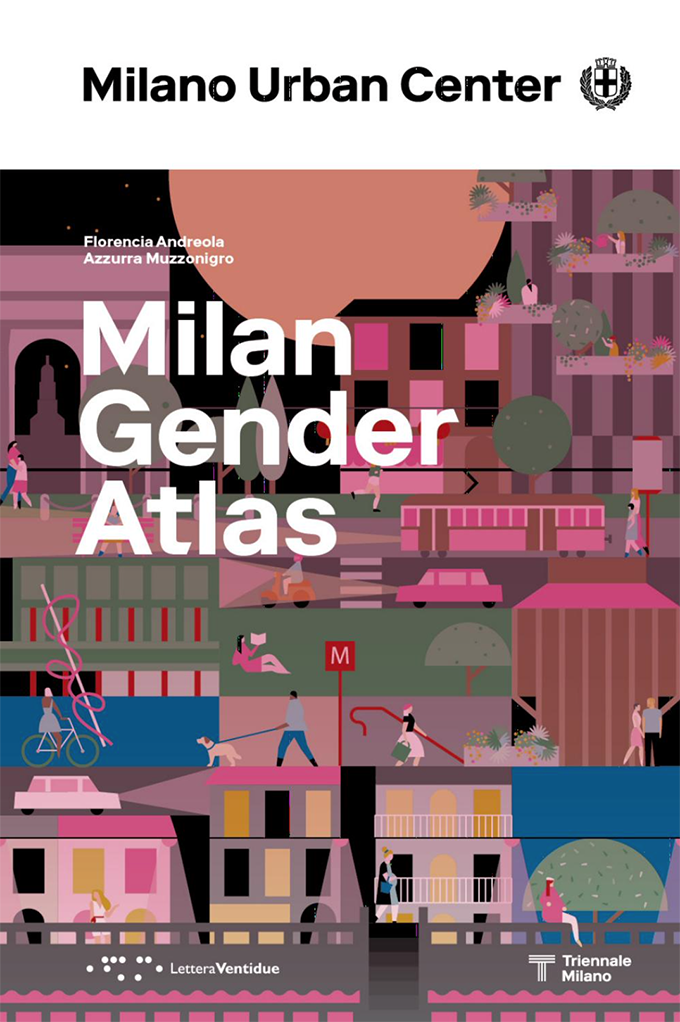
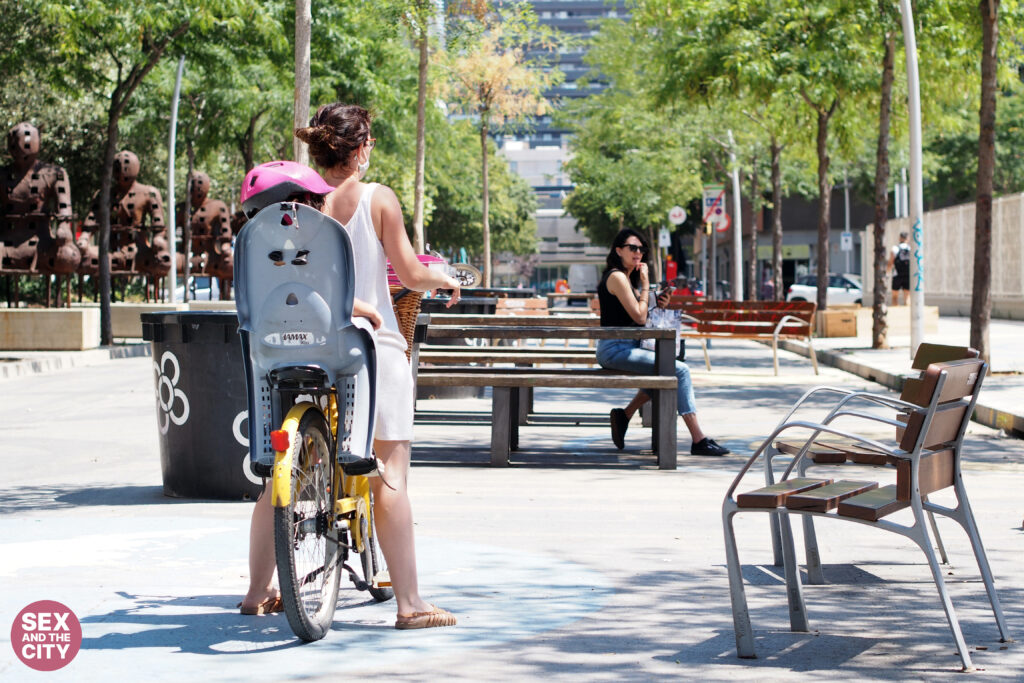
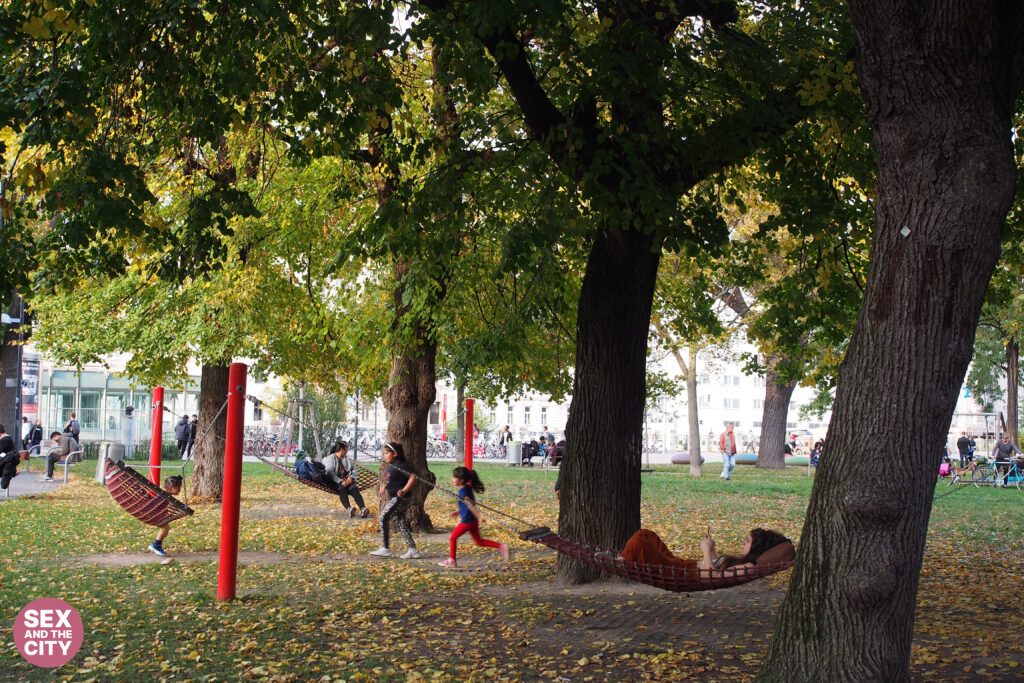
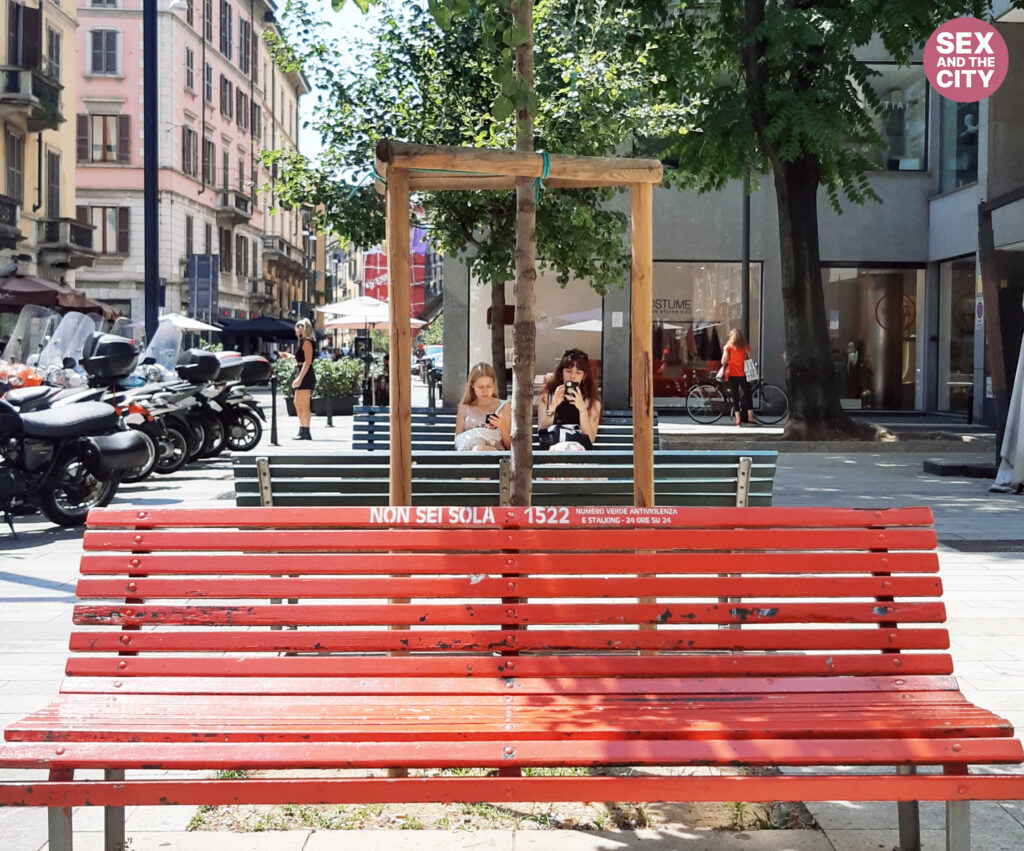
4. Rozina Spinnoy / Empowering Women: Public Space and Climate Change
Belgium (2020 – ongoing)
“By creating public space that serve the needs of the intersectionality of women, we can build more resilient communities that are better equipped to face the challenges of climate change”
Rozina Spinnoy
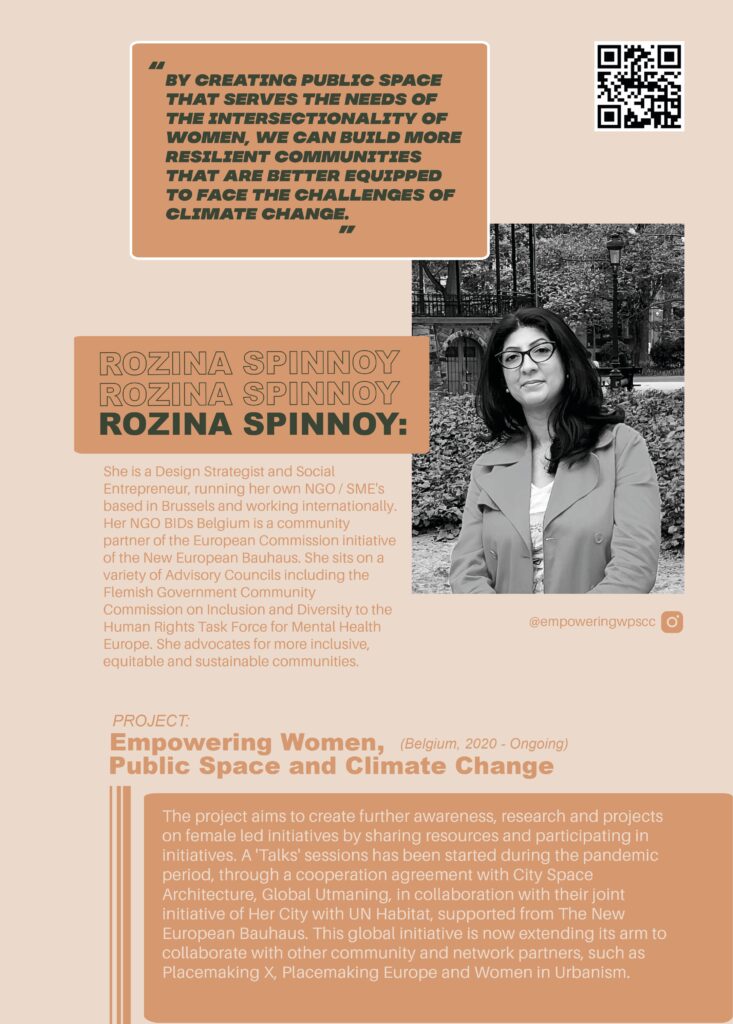
Read more about Empowering Women project: https://empoweringwpscc.com
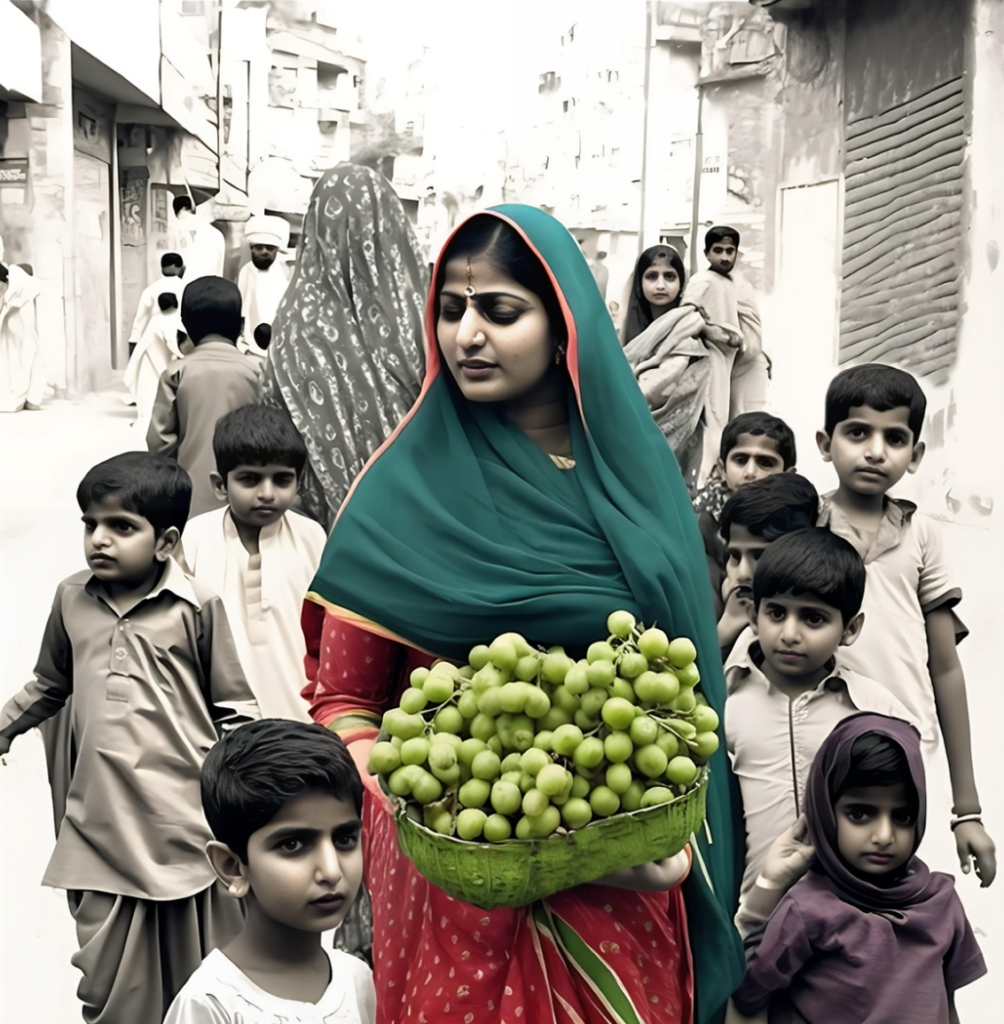
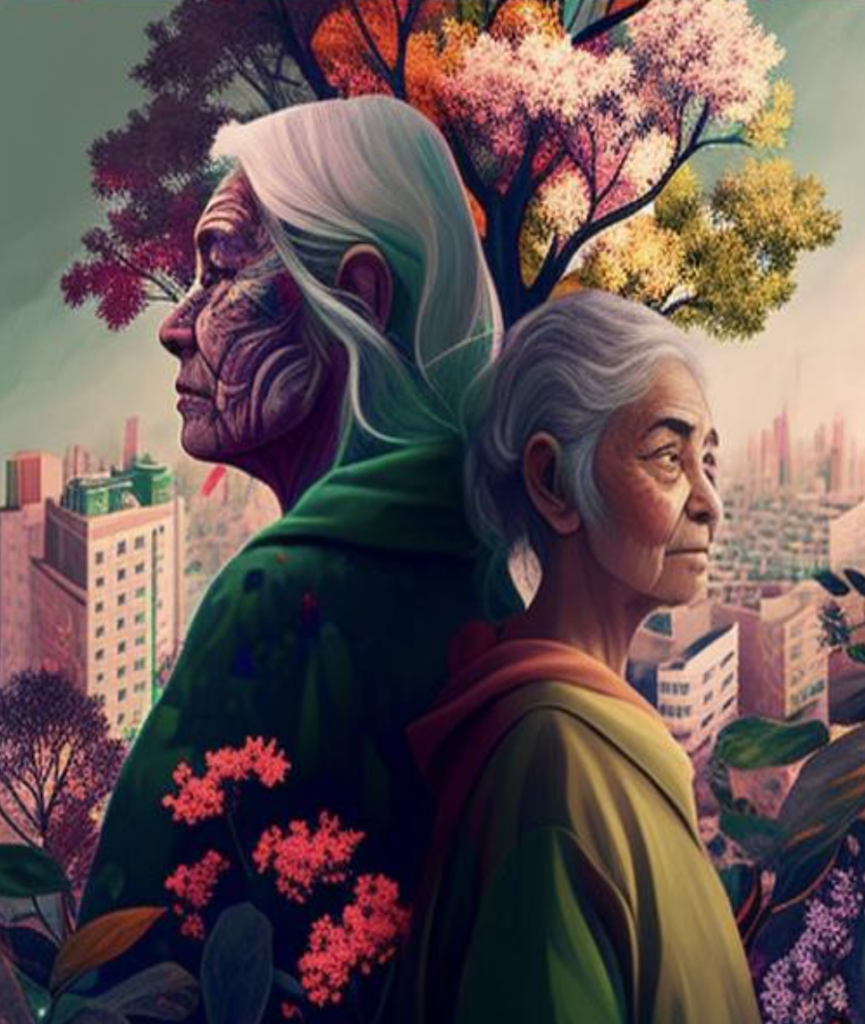
5. Elin Andersdotter Fabre, Tove Levonen / Her City
UN-Habitat, Kenya (2022-ongoing)
“Involving girls in urban development will make the city better for everyone”
Elin Andersdotter Fabre, Her City Coordinator, UN-Habitat
6. Collectiu.6
Barcelona, Spain (2005 – ongoing)
“You have to change the city to transform everything”
Collectiu.6 – https://www.punt6.org/
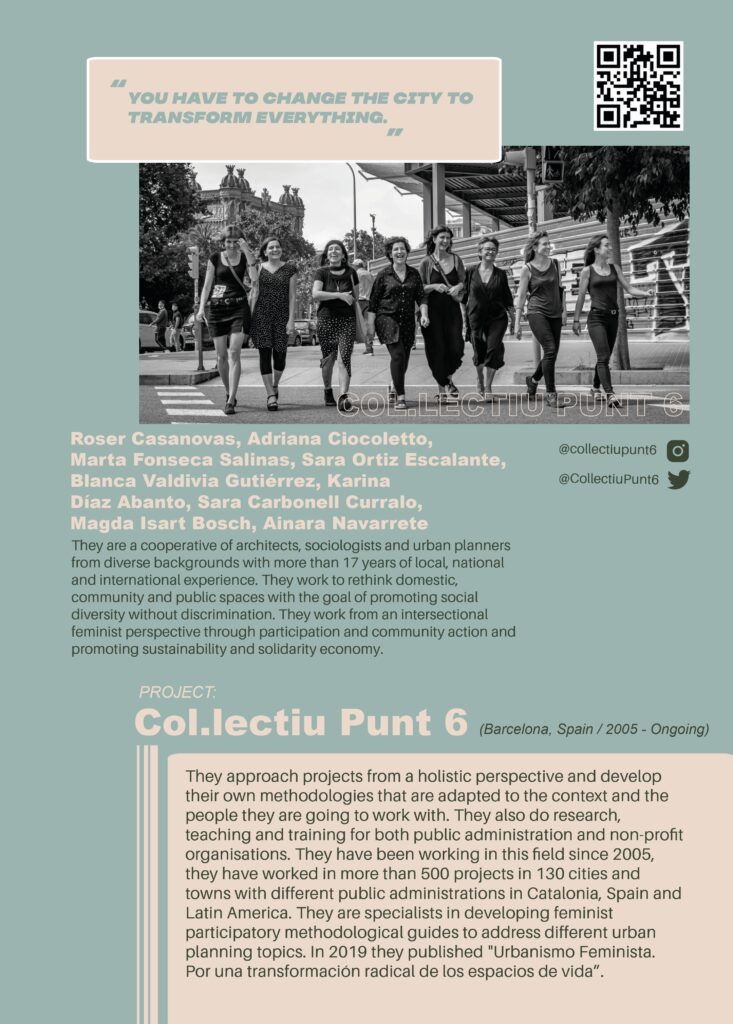
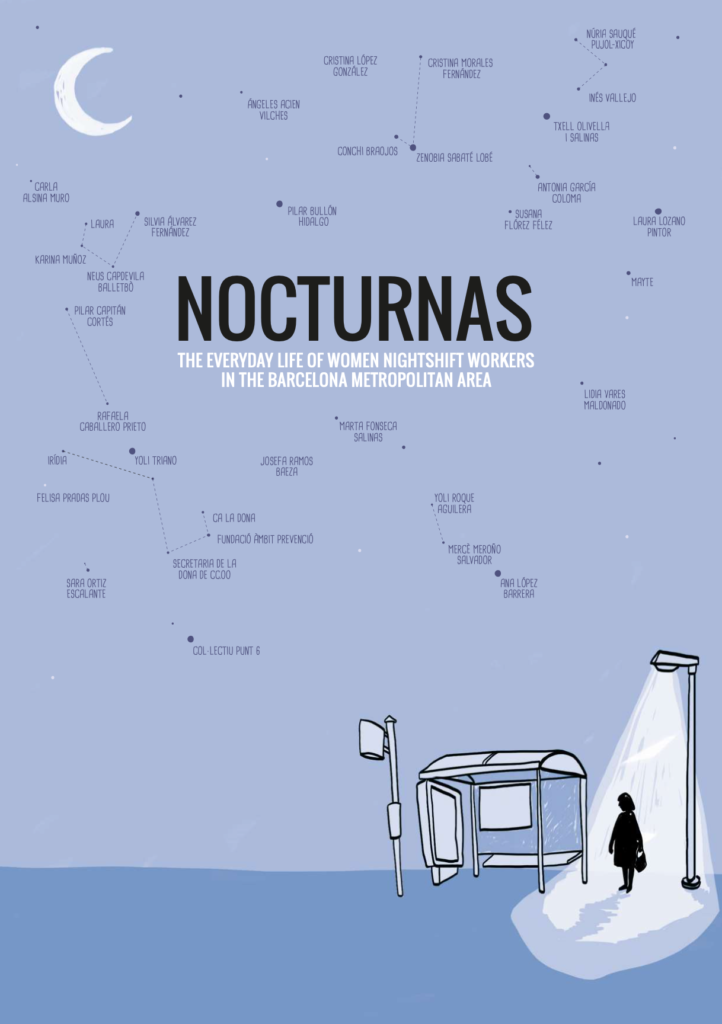
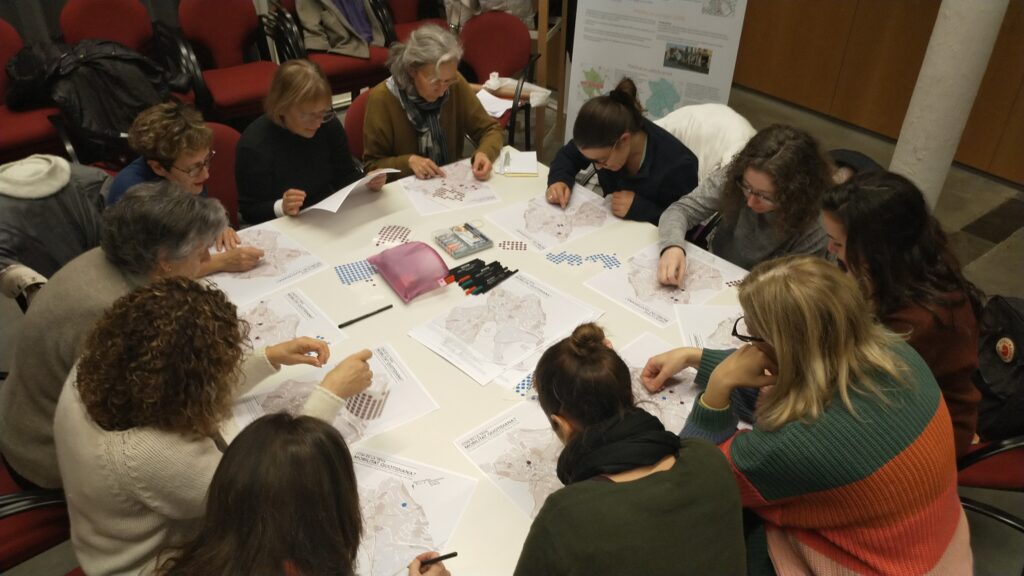
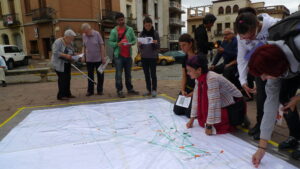
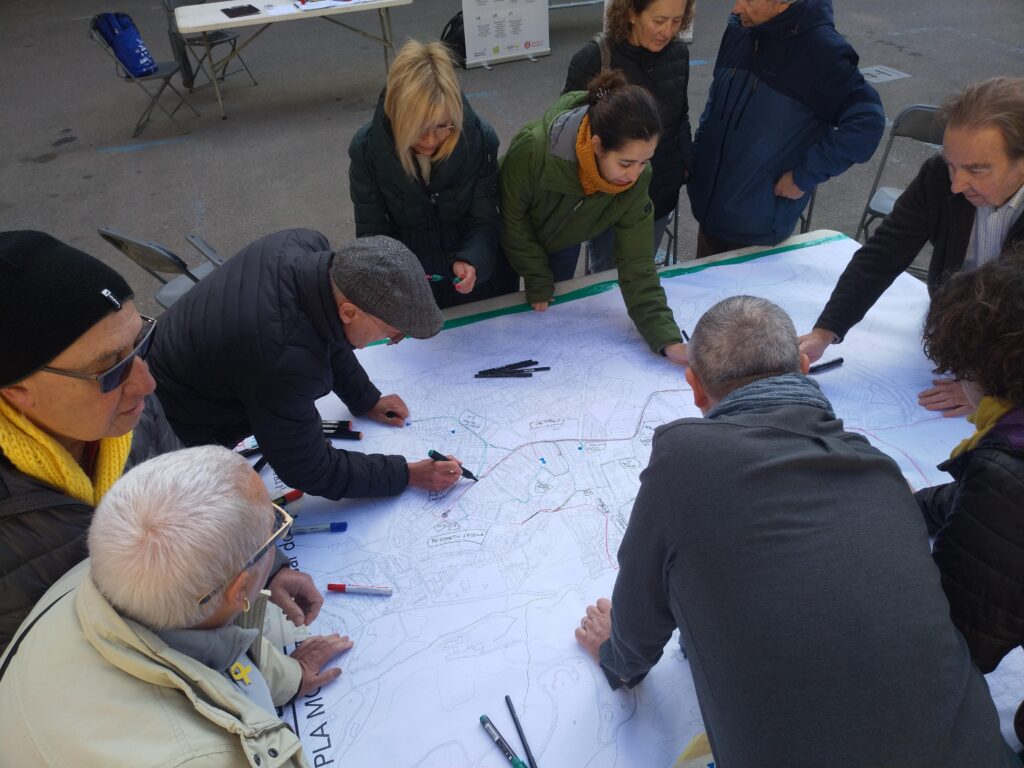
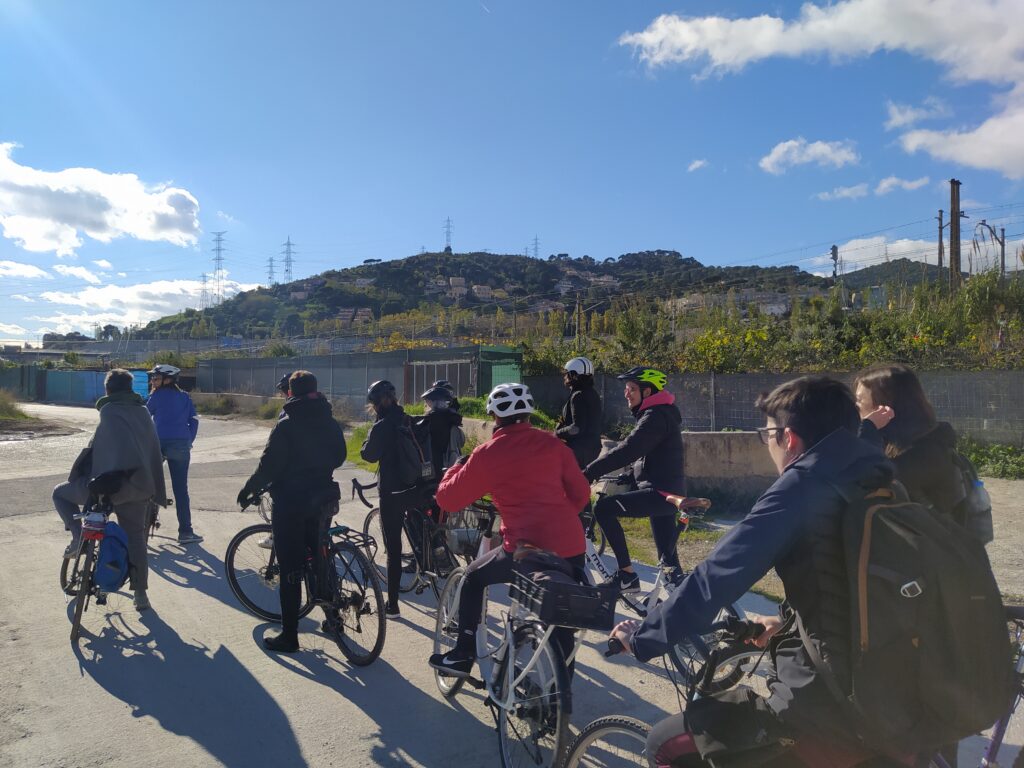
7. Nourhan Bassam / Gaming X
Egypt (2022 – ongoing)
“Cities for too long have been failing women, in mobility, economic empowerment, safety, and representation, and it’s past time for this to change”
Nourhan Bassam, The Gendered City – https://genderedcity.org/
8. Teresa Tourvas / Frau Architekt
Cyprus, 2021
“Celebrating the life of women in architecture as a diverse practice which creates a positive impact on society.”
Teresa Tourvas, Urban Gorillas
9. Anabella Roitman / Urbanismo Feminista
Argentina (2021 – ongoing)
Our research studies the overlapping of theory and ideas associated with feminist urbanism, in different cases of national and international urban public policies
Anabella Roitman
Other projects collected for the exhibition from the global community of City Space Architecture
Boopsie Maran (New Zeland)
Boopsie Maran is an activist at heart, she has advocated for public spaces to be more pedestrian friendly, more livable, and more fun for decades. She is director and founder of the urban strategy consultancy, Places for Good based in New Zealand. Her work celebrates inclusion and diversity through nurturing communities in their journey to create spaces that inhabit their values. Together we can focus on adapting government policies around ownership and enhancing partnerships between cities and all its citizens. Everyone deserves to live in a community that has a strong sense of whanaungatanga (belonging).
Women at play / Women at rest / Women together / Women and child / Women where cars should be / Women feeling safe / Women out in the open / Imagining Public Spaces for Her . . . made easier by seeing her often and in it.
Snapshots of women and girls in the cities, squares, streets, parks, and places they call home. Many in Tāmaki Makaurau / Auckland in Aotearoa / New Zealand have been recently freshened up with “her” in mind. Urban street art across Melbourne showcases women at a large scale across its city streets. New York City & San Francisco … both old and new making restful refuges in the street and by the sea.
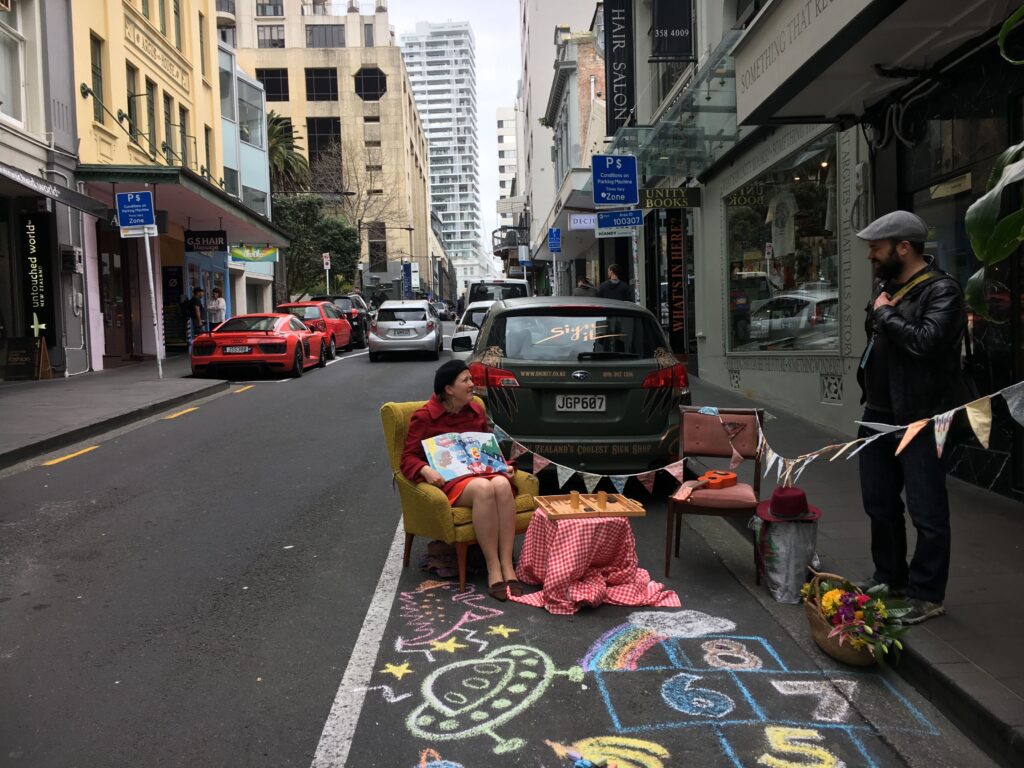
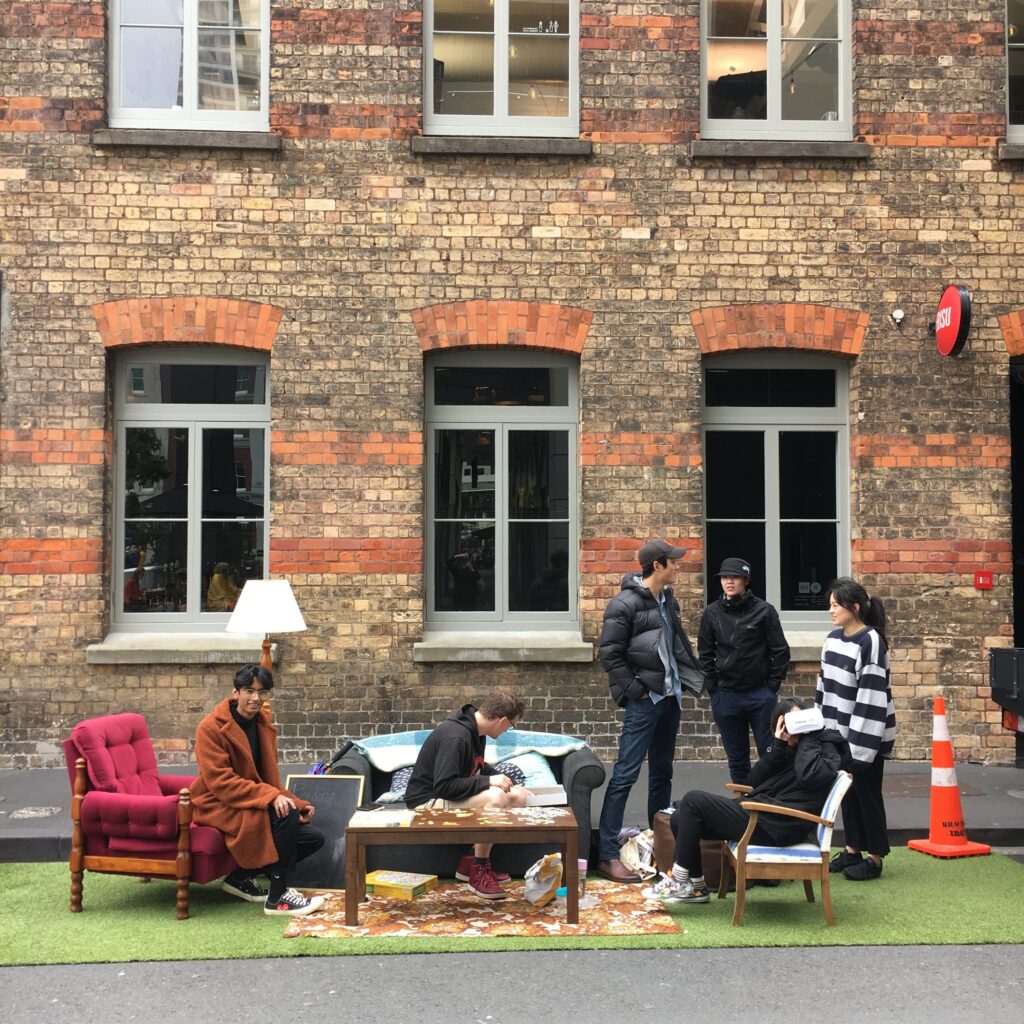
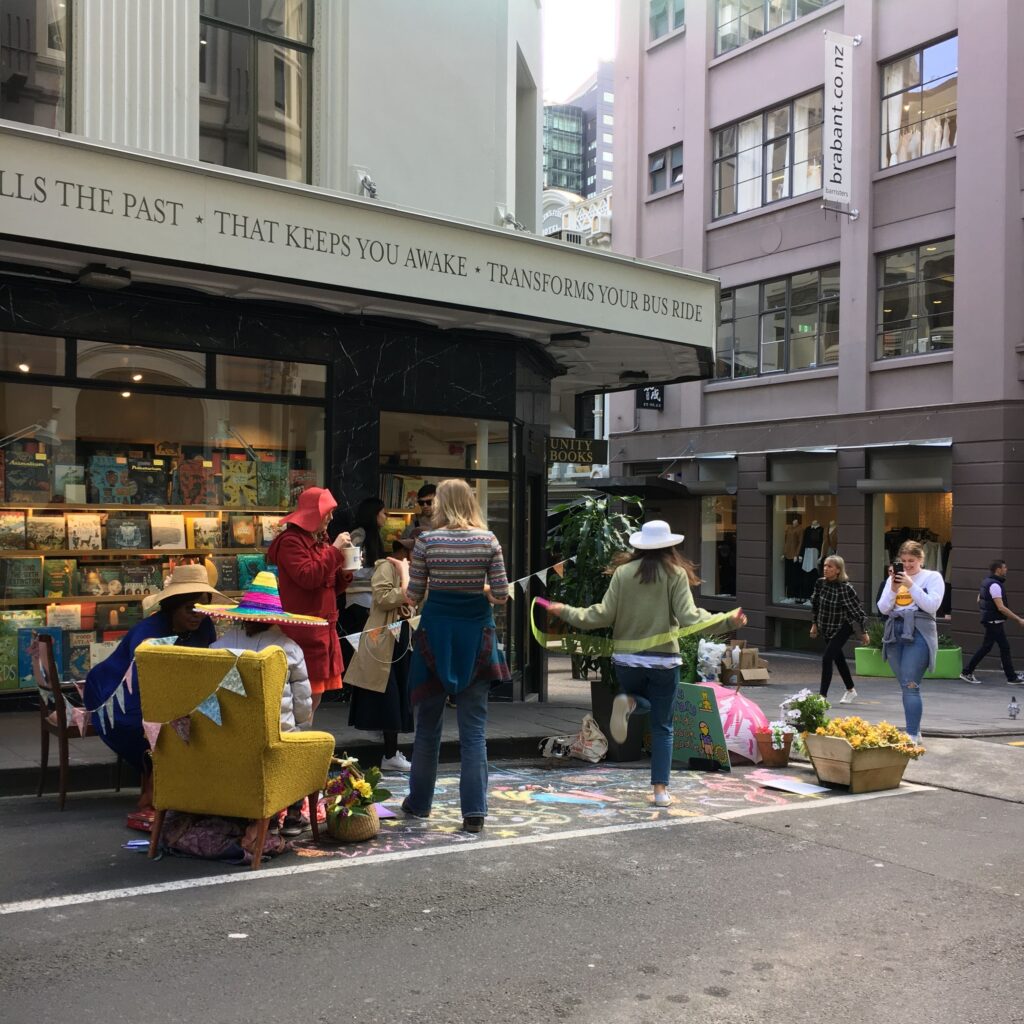
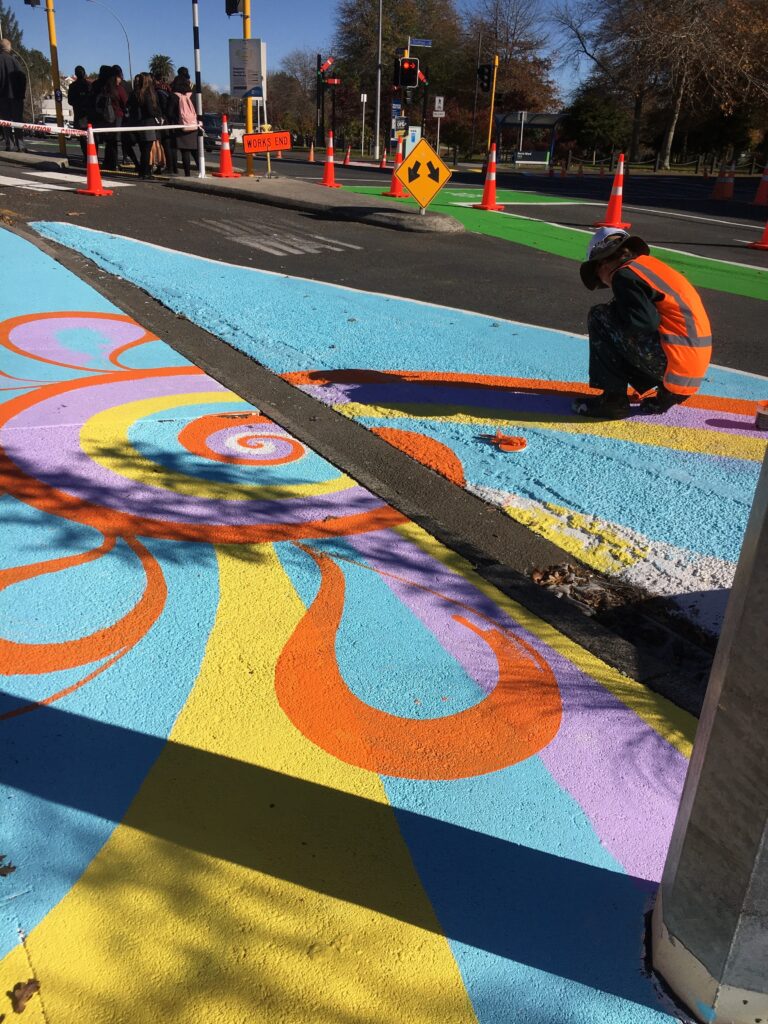
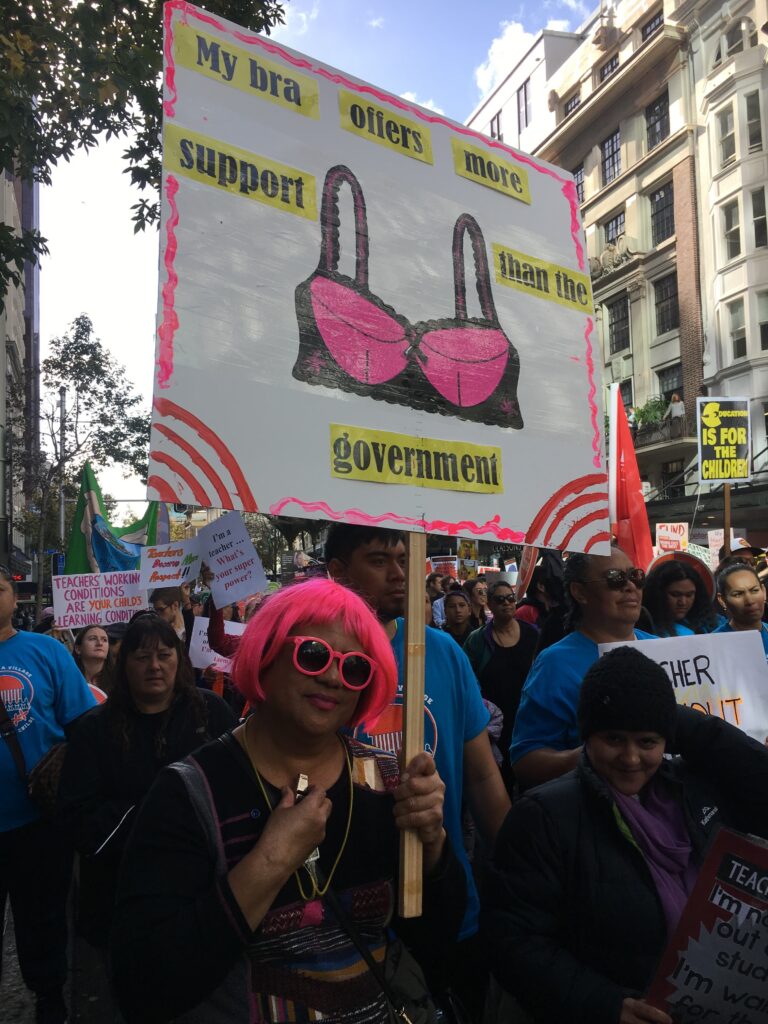
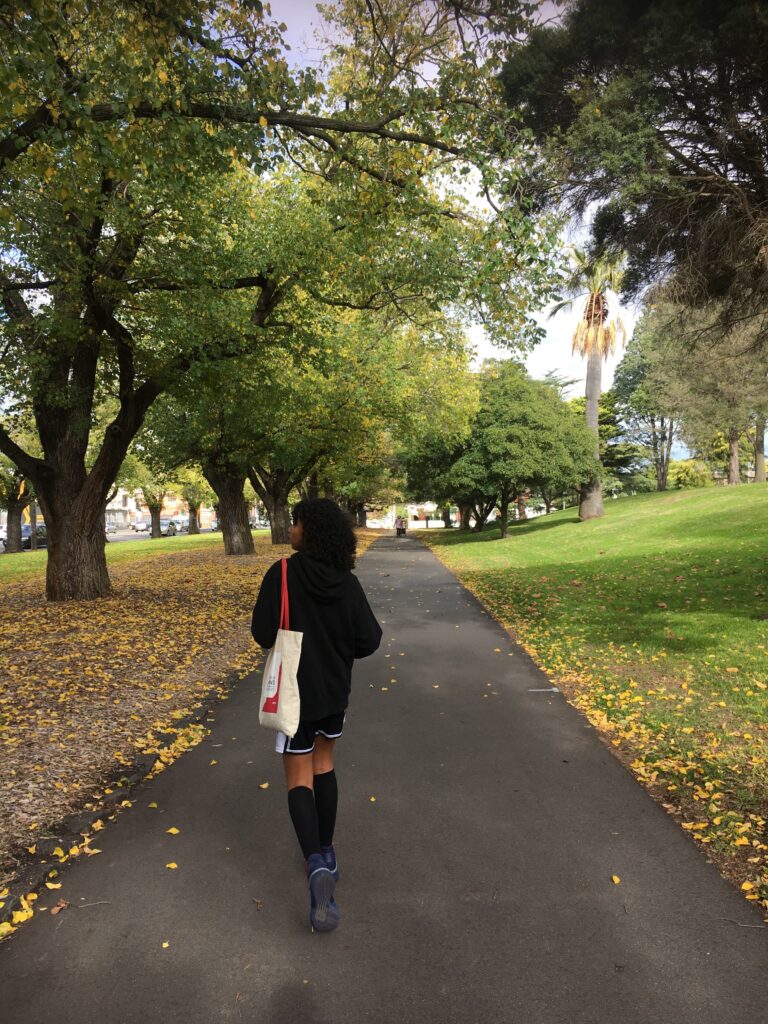
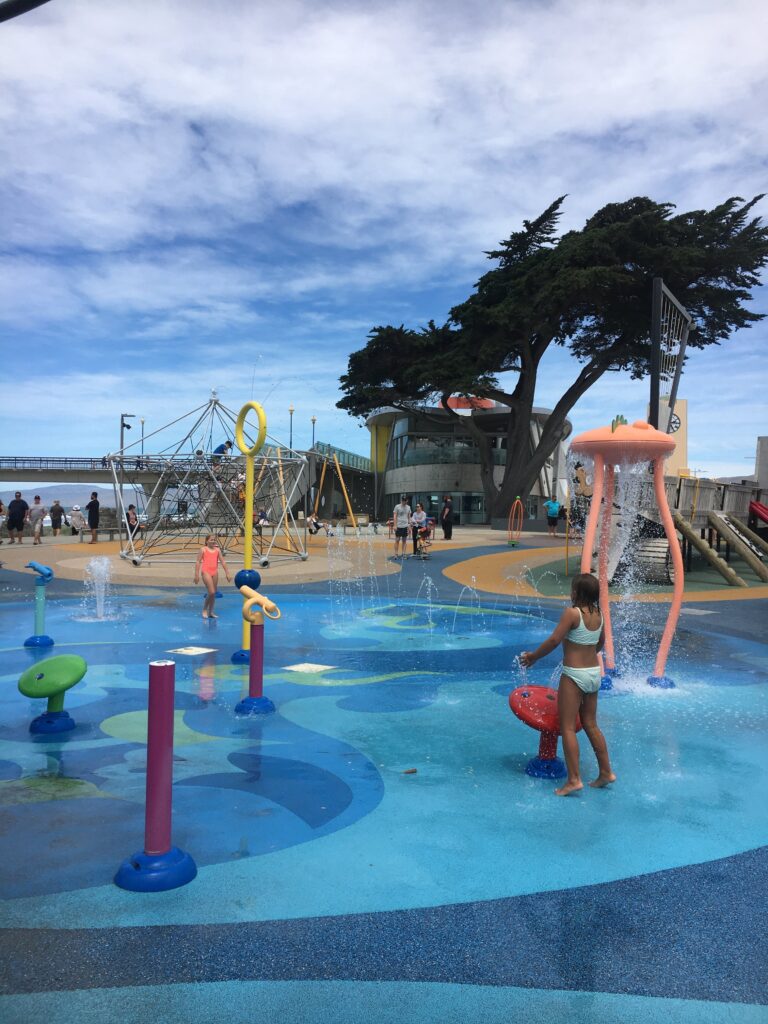
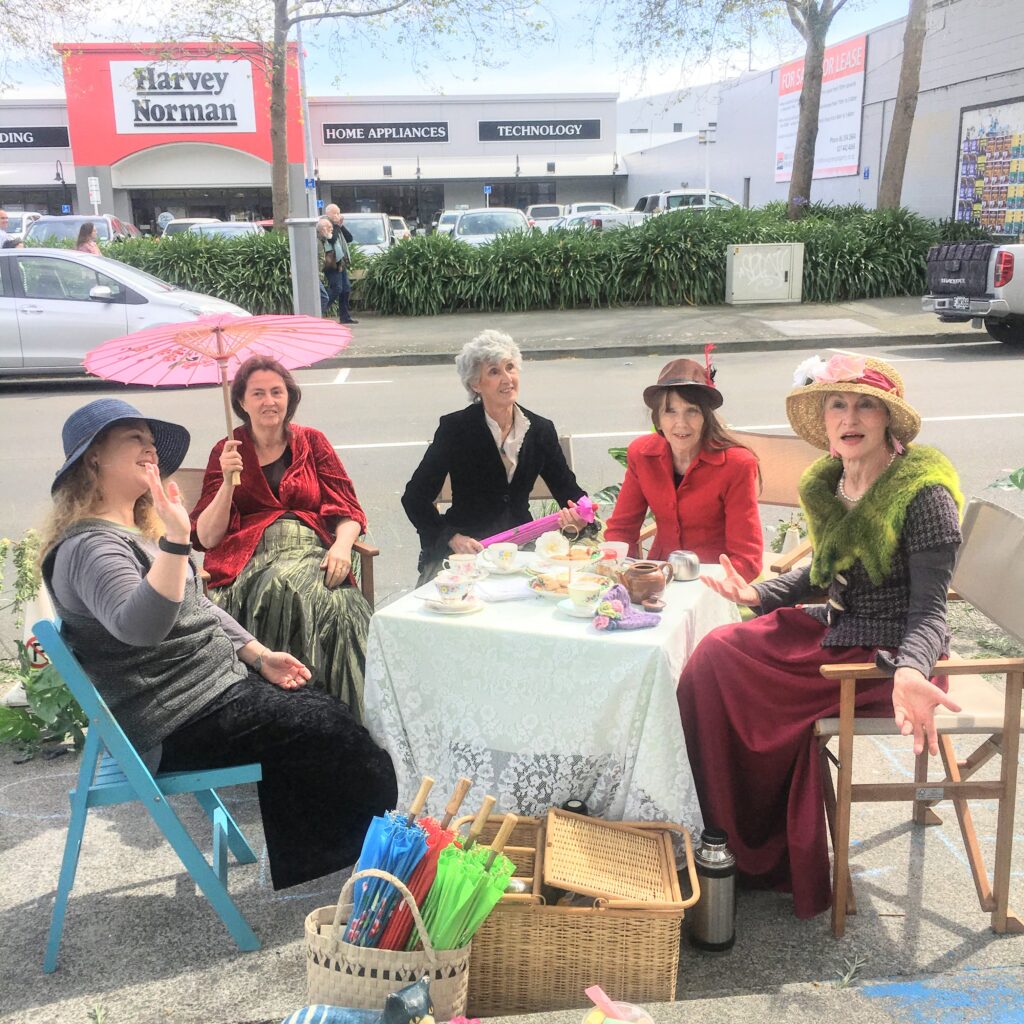
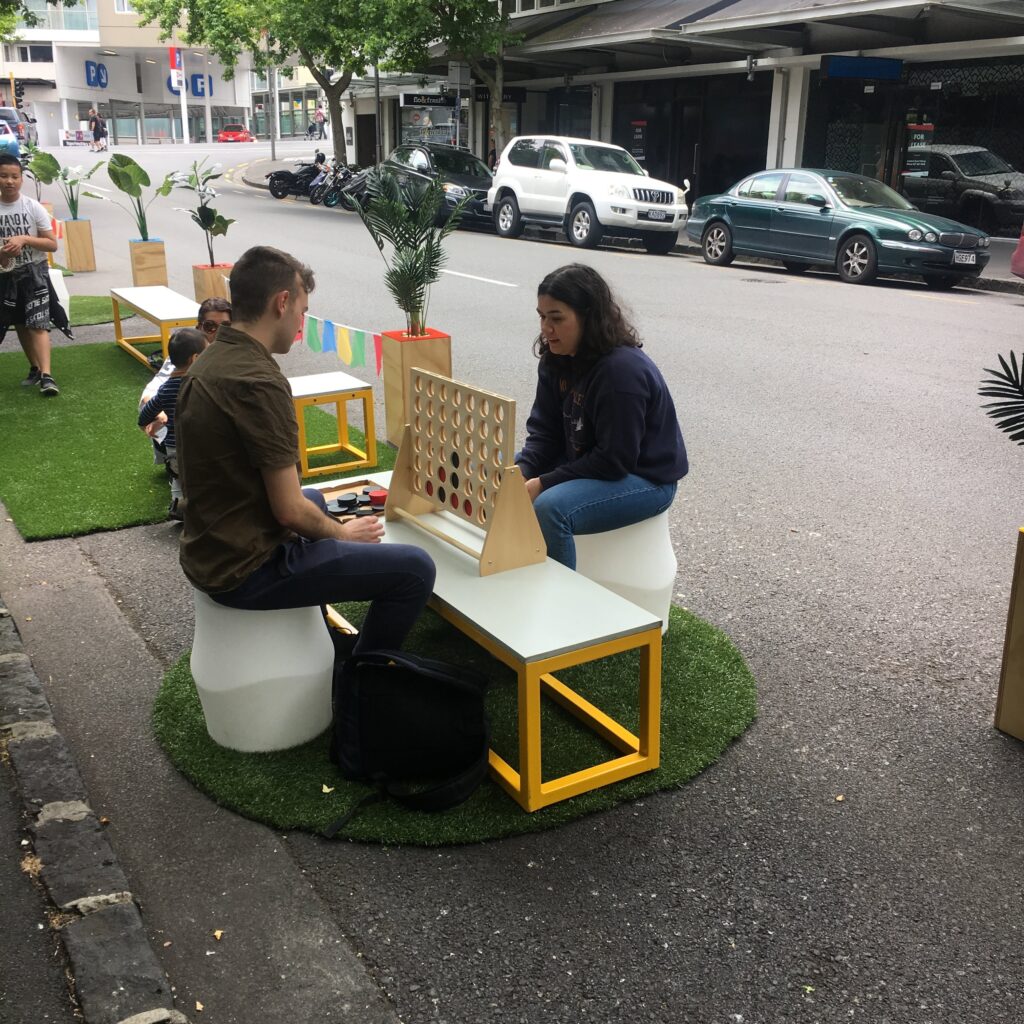
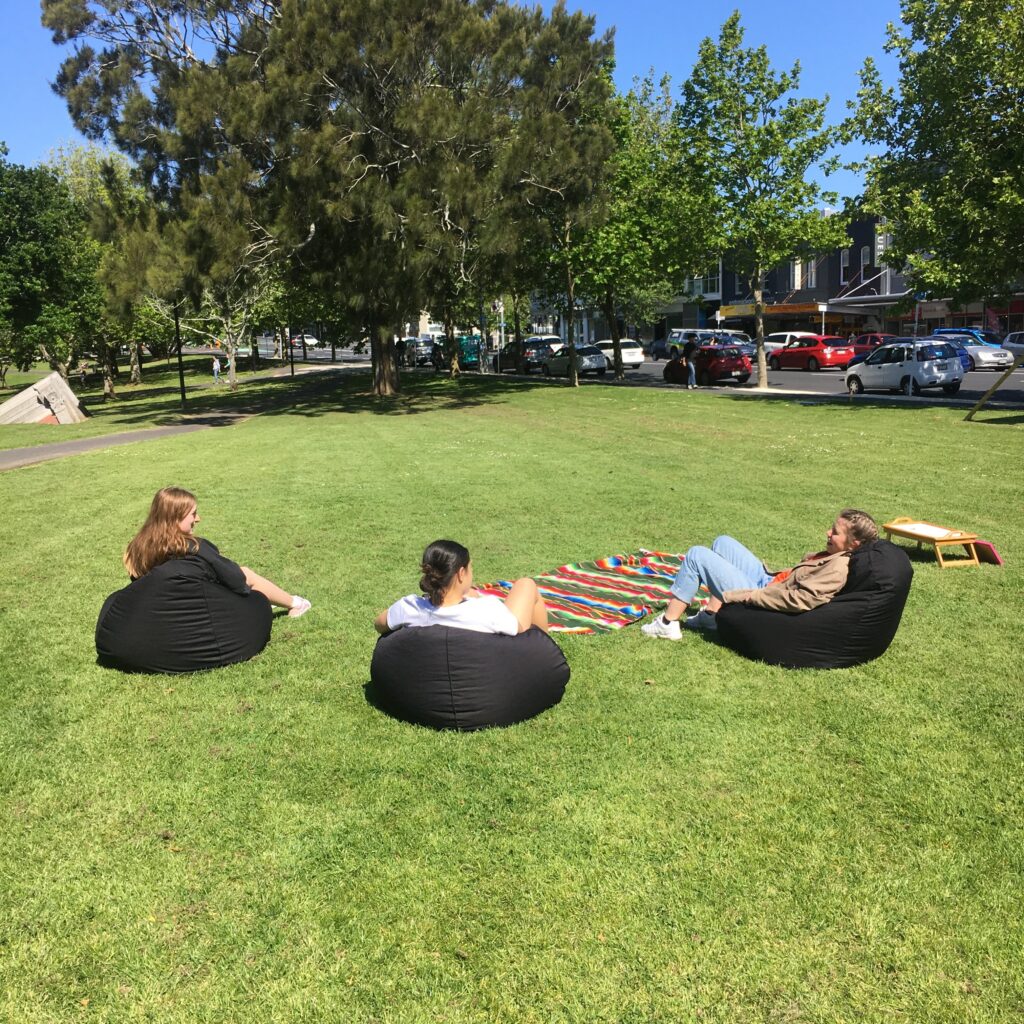
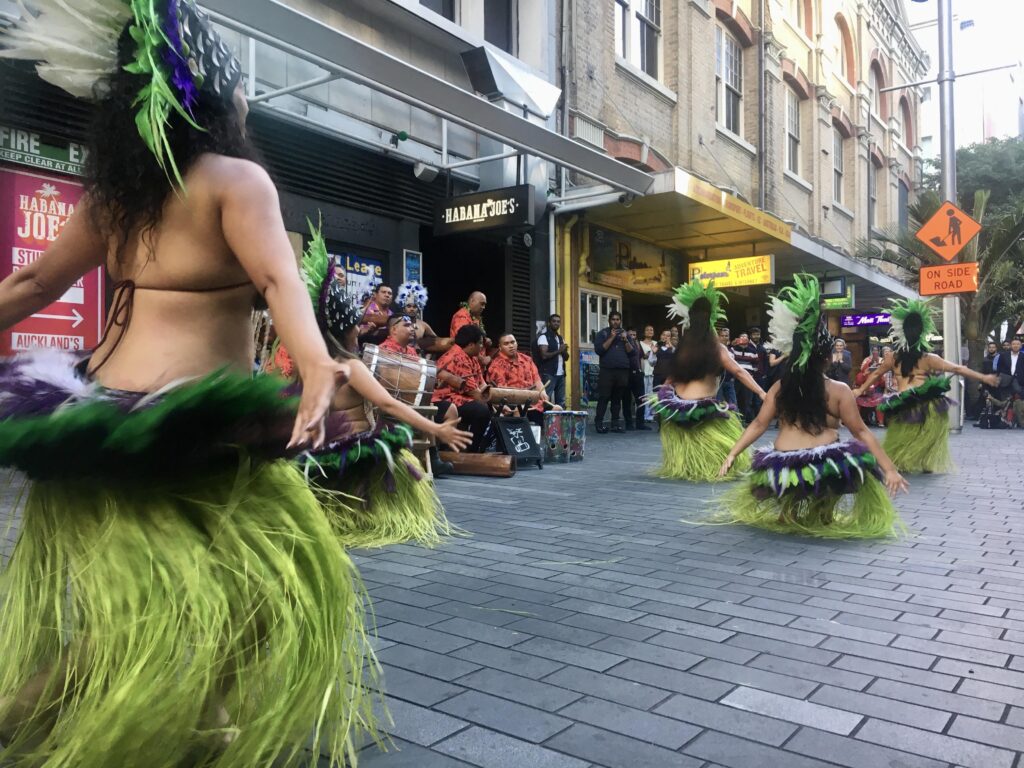
Claire Edwards (Australia)
Claire Edwards is a practitioner and researcher who contributes to creating inclusive public spaces and cities and our understanding of place and people’s connection to it. This includes exploring ways to increase public participation in the design and development process, co-creation and collaborative practice and informal, flexible spaces for experimentation that support cultural expression and play. She is interested in the fulfillment of rights-based agendas and the UN Sustainable Development Goals, especially related to liveability and spatial equity.
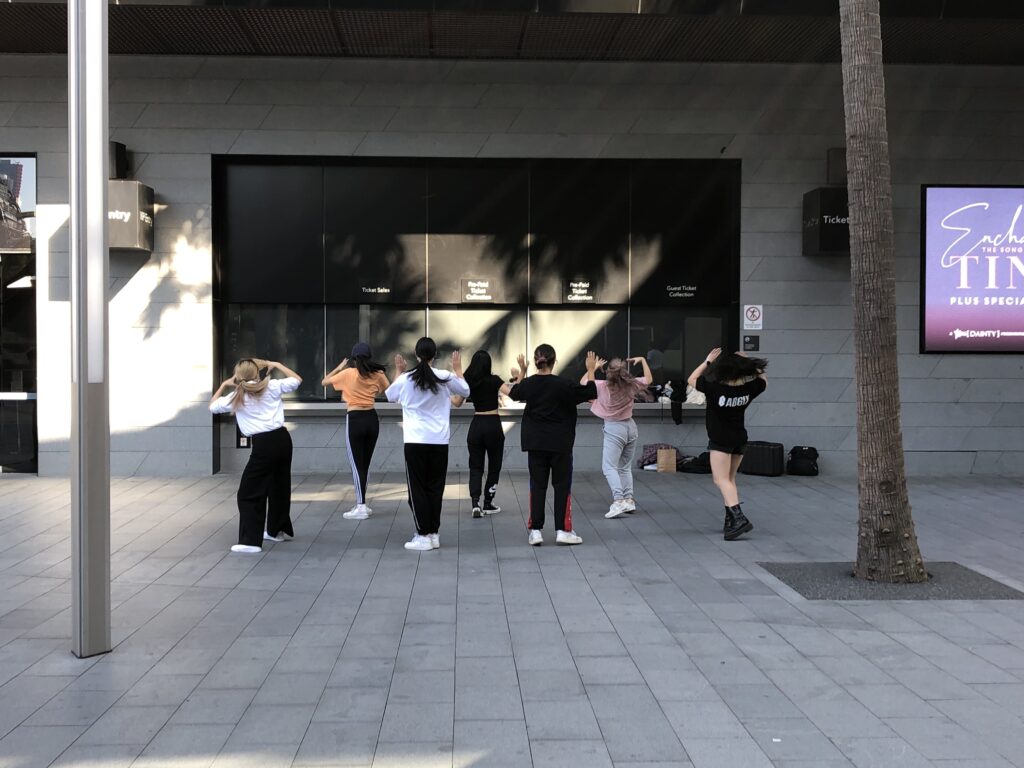
Moriarty Walk, aka Dancer’s Lane, adjacent to the International Convention Centre (ICC) in Sydney has become a place for young people’s informal dance. Prior to the redevelopment of the ICC and surrounding public space, community consultation established that young dancers were significant users of the area. Understanding their needs resulted in a permissive attitude towards their activities taking place in the redesigned public space. The general ambiance around the site is playful, and activities such as skateboarding, cycling and rollerblading are also prevalent. These sites fulfil young people’s right to self-expression, to play, to inhabit and shape space, and contribute to the fulfillment of their right to the city.
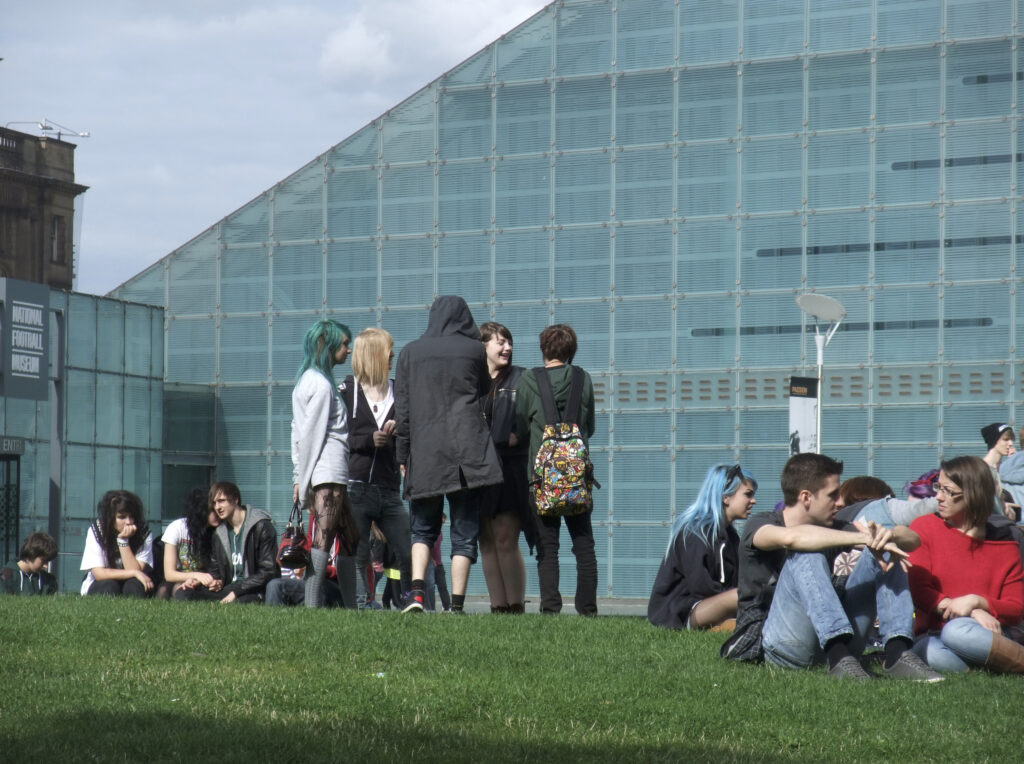
Manchester, Cathedral Gardens is a destination for young people. Young people, including young women, interviewed at this centrally located public space in Manchester described the square as easily accessible due to good public transport links and for many, an escape from their local neighbourhoods. Their neighbourhoods were perceived as places of tension due to conflicting social dynamics; they often felt vilified for their associations with sub-cultures e.g. goths. This central space is seen as a safe and affords socialisation with those of similar interests.
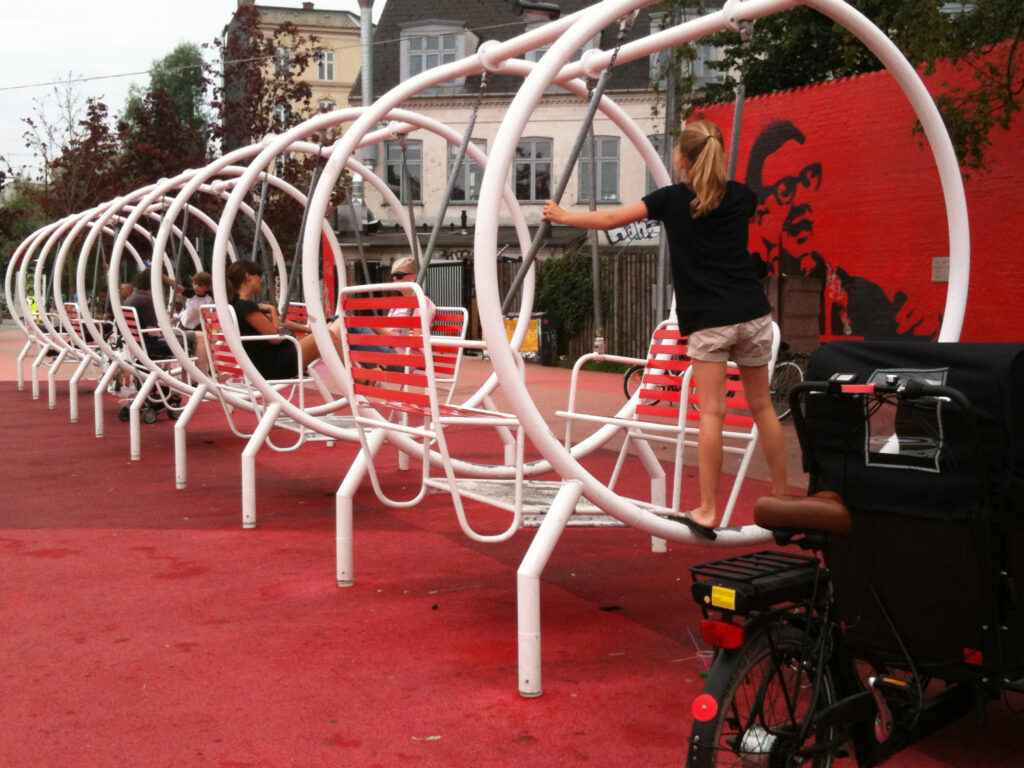
Playful elements such as swings not only provide affordances to play but also opportunities to socialise for all ages. This image of Iraqi designed swings at Superkilen urban park in Copenhagen illustrates this point.
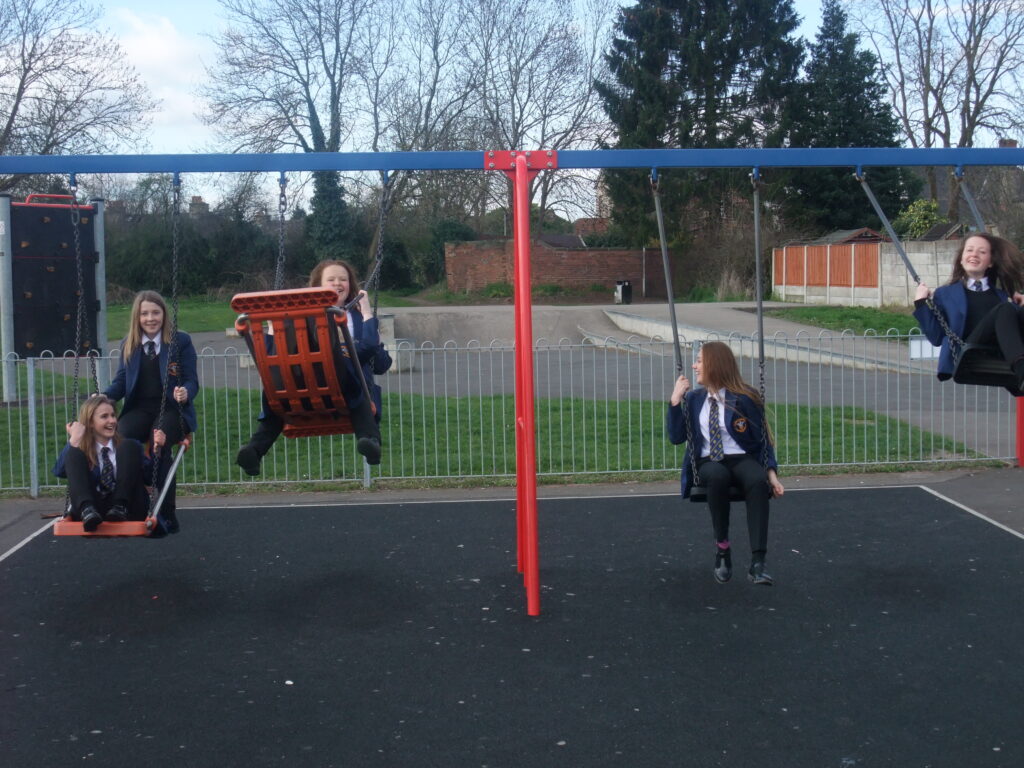
Student led tours around a small Welsh town were organised as part of a Welsh Sufficiency to Play Assessment (2015) to identify young people’s sites of play, socialisation and to establish where they felt safe and unsafe. Female teenagers identified the playground in the centre of town as one safe, permissible, space. They explained how they would play and hang out more freely if they were the only ones at the play space, and that lighting it would also increase their opportunities to spend time there. Interestingly, parents were reluctant for their daughters to hang out in the town centre, by the shops, for fear this would negatively affect the young women’s reputation. The assessment data indicated teenagers were perceived negatively and there was a lack of understanding and tolerance towards teenage play and them spending time in public space.
Lamia Abdelfattah (Egypt)
Lamia Abdelfattah is a senior urban planner and researcher at Systematica and Fondazione Transform Transport based in Milan. She has a background in participatory urban design in informal urban areas and expertise in issues of spatial equity in cities with a particular focus on gender equality. Her research interests extend to critical urbanism and the analysis of sustainable, accessible and inclusive solutions in urban mobility.
Compartmentalised: a critical reflection on women-only transit spaces
Gender-exclusive public spaces are a specific type of “public” space – often restricted to women – aiming to give users a sense of security and privacy by way of isolation. Paradoxically, these provisional ‘public’ spaces operate on the basis of selective access conditions as a means to eliminate barriers facing a particular group when using unlimited public space.
This project is concerned with a specific application of gender-exclusive space—that which is applied to public transport vehicles. Public transport is by essence public space of a different nature: (a) it is a de-localised transient space, and (b) it is essentially an enclosed public space in which users are effectively ‘trapped’ with other users for the duration of their journey. These conditions have different implications on socio-spatial gender relations and fears of gender-based violence that are different from those experienced in open public space. Unknown to many, single-sex transport is as global as it is contentious. A map produced by urban geography professor Marion Tillous compiled a meticulous map marking cities that have applied the scheme in past or present and on different transport modes (see image); revealing that the concept is not restricted to specific economic or cultural regions (Tillous & Gillot, 2014).
Ultimately, the research argues that while women-only public spaces may prove useful on the short term by providing safe havens for women on their daily commutes, on the long run, and in the lack of other able-ing devices that give women an active role in safeguarding their right to safety and/or comfort in public space, what these spaces effectively “protect” is women’s contingent presence in the public sphere and the treatment of their urban needs as retrofits to a pseudo-neutral (male) norm.
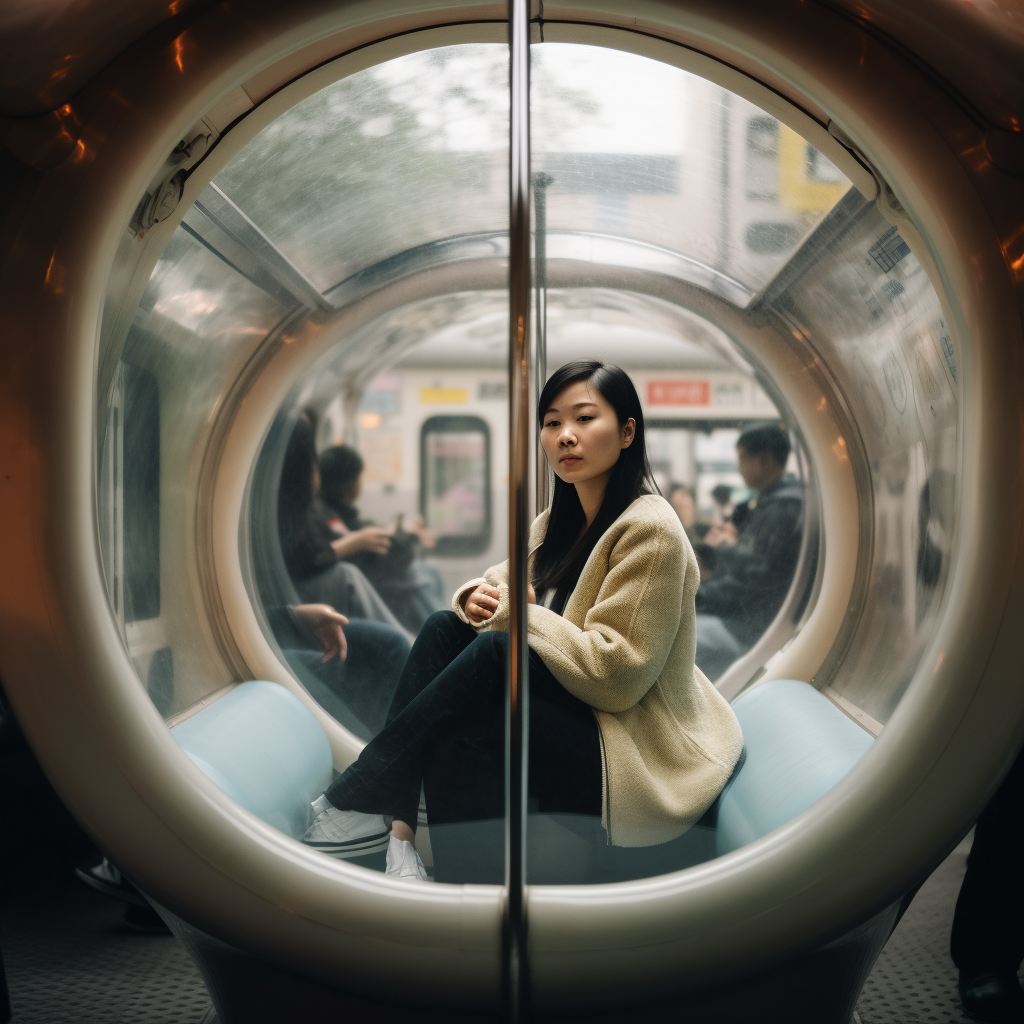
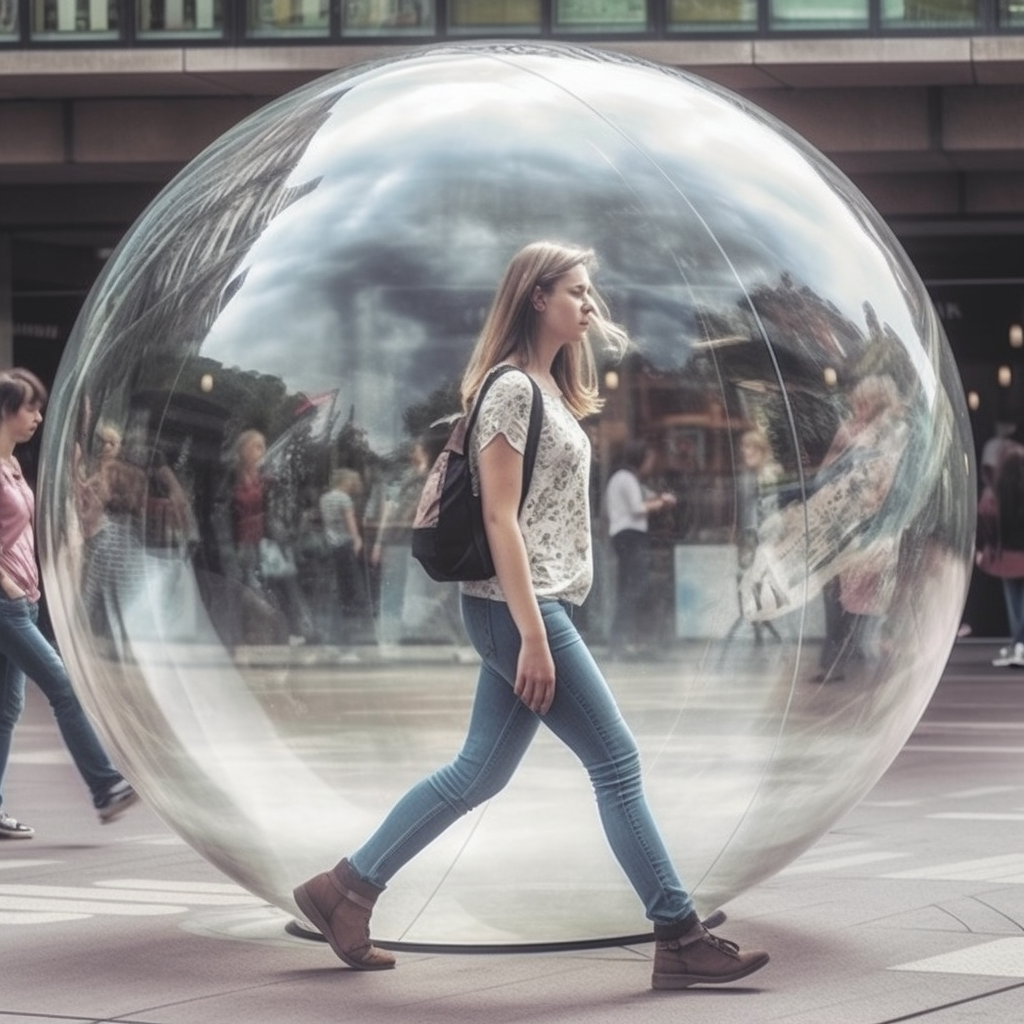
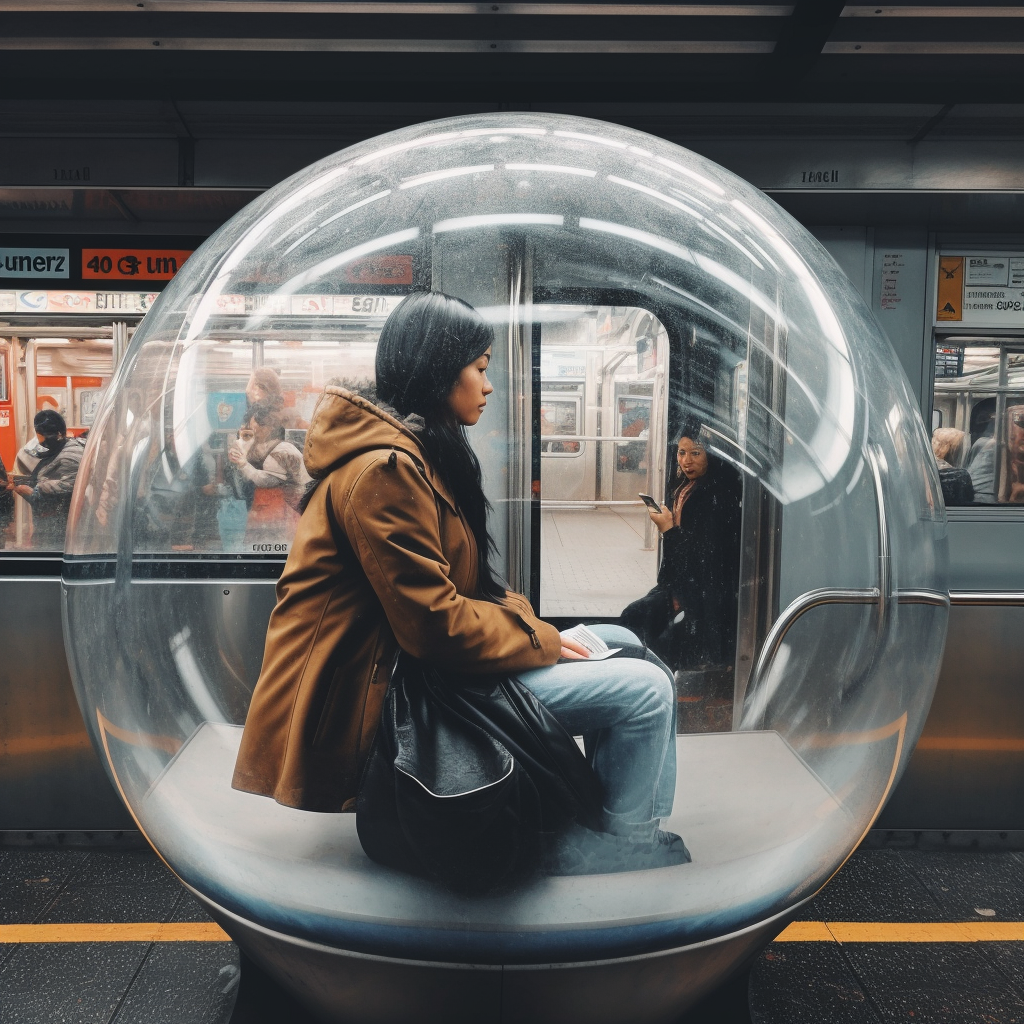
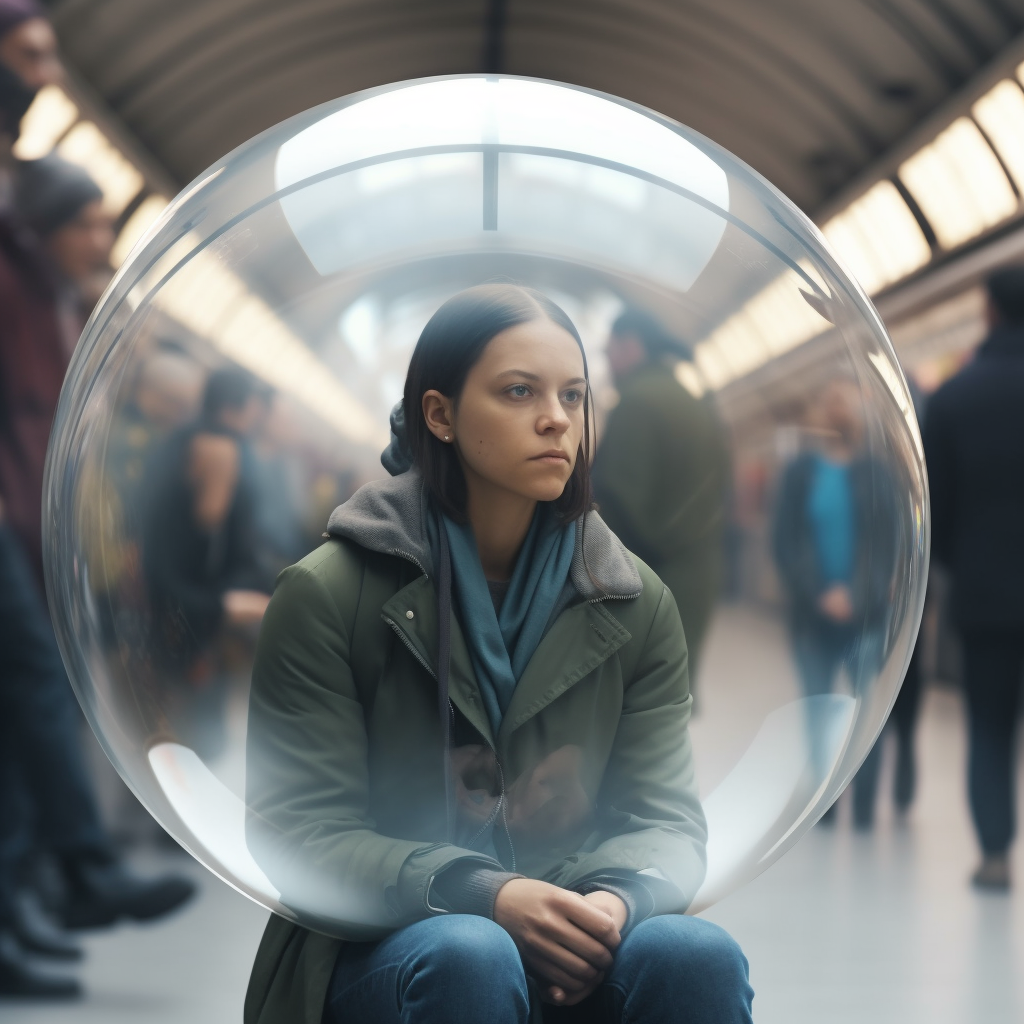
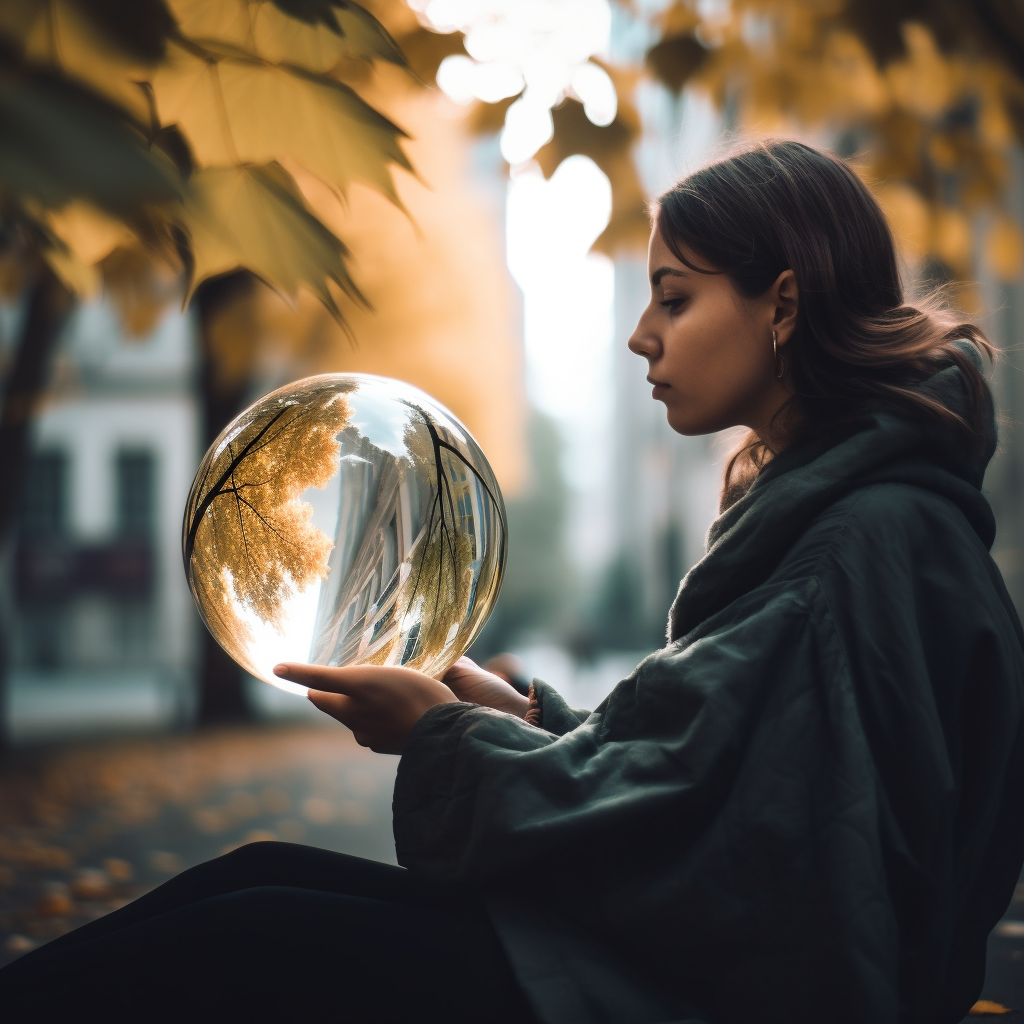
Transport for New South Wales (NSW)- Safer Cities Program: Parramatta Park (Sydney, Australia)
The Safer Cities Program is a two-year program being delivered by Transport for New South Wales (NSW) Australia. It aims to understand and trial place-based approaches to improve safety for people who identify as women and girls, when walking to, through and within public spaces.
The program incorporates research and engagement with government and the community to test and deliver works to: increase women and girls’ safety and access to public spaces, increase women and girls’ active and meaningful participation in urban development and governance, increase women and girls’ autonomous mobility in the city.
Parramatta Park in Western Sydney is one public place where, as part of the Safer Cities program, safety improvements will be made to help women and girls feel safer, especially at night. To understand more about women and girls behaviours and experiences in safety in public spaces, particularly Parramatta Park, a series of ‘walkshops’ (walking workshops) were conducted with women and high school aged girls. Additional walkshops were held with women at night to understand the difference between perceptions of safety in Parramatta Park in the day and the night. The daytime walkshop with high school girls was followed by a co-design workshop to ideate potential safety improvements to the Parramatta Park commuter path and to the park more generally that would help the girls feel safer when using this public space.
Throughout the walkshops, the women and girls were asked to describe how safe they feel while walking along certain areas of the main commuter path and to identify what would help make the park feel safer at night. In addition, they were asked to discuss CCTV cameras and whether they would affect their perception of safety, as well as name other security features that might help them feel safer while walking in the park at night. Most women said parks generally do not have lighting or other amenities to enable women and girls to use them well at night. The girls spoke about parks and sports fields generally not being somewhere they like to go, as they usually find they can only hang out on the sidelines while boys and men play sport, or younger children dominate playgrounds. There are rarely opportunities specifically designed for girls to interact with and want to spend time in these areas.
At the conclusion of the walkshops, the women and girls were asked what their overall top priorities were to feel safer in the park. Below is a summary of their responses: more lighting, CCTV cameras that run 24/7, more amenities located closer to the path, including bathrooms and seating, events and activations to make people feel welcome and included, emergency help points, maps and wayfinding signage, more accessibility for people in wheelchairs or people with low mobility, need for people around, so there is safety in numbers.
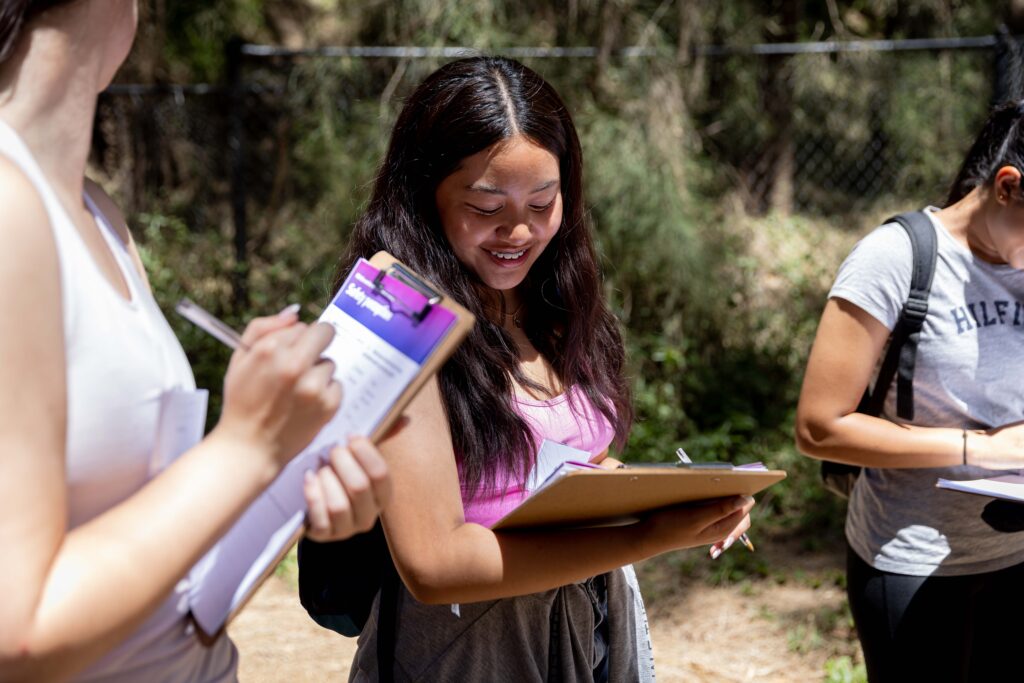
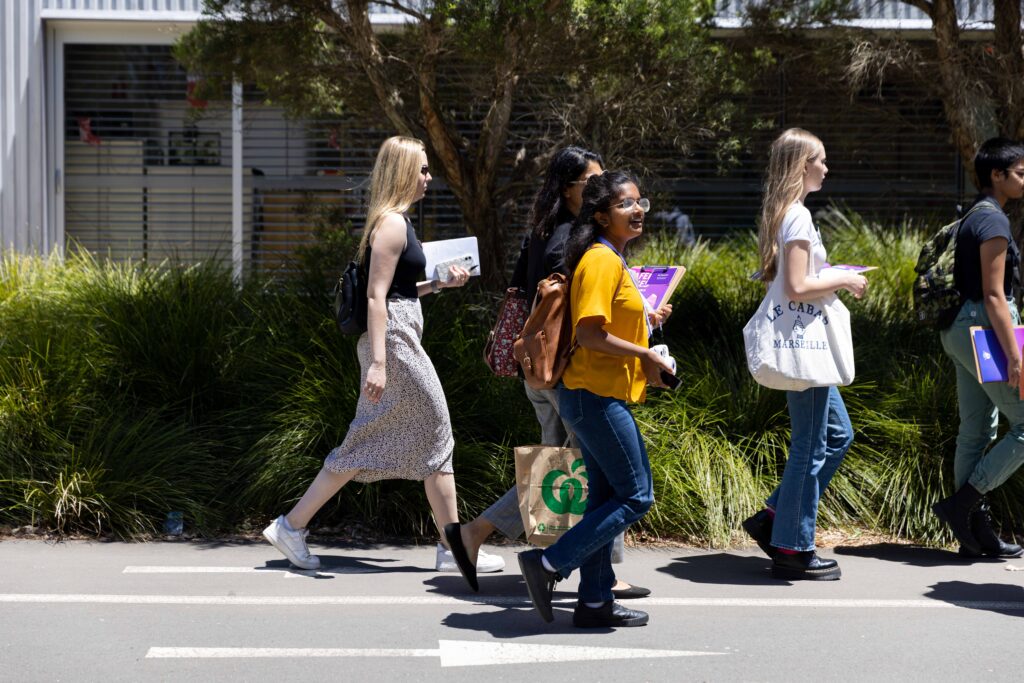
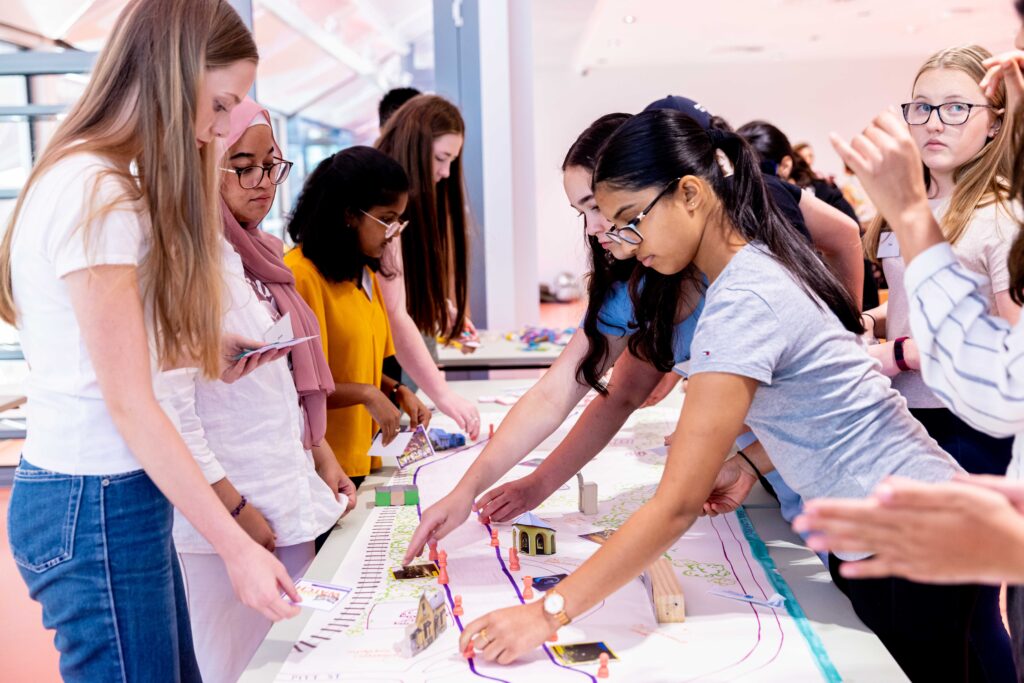
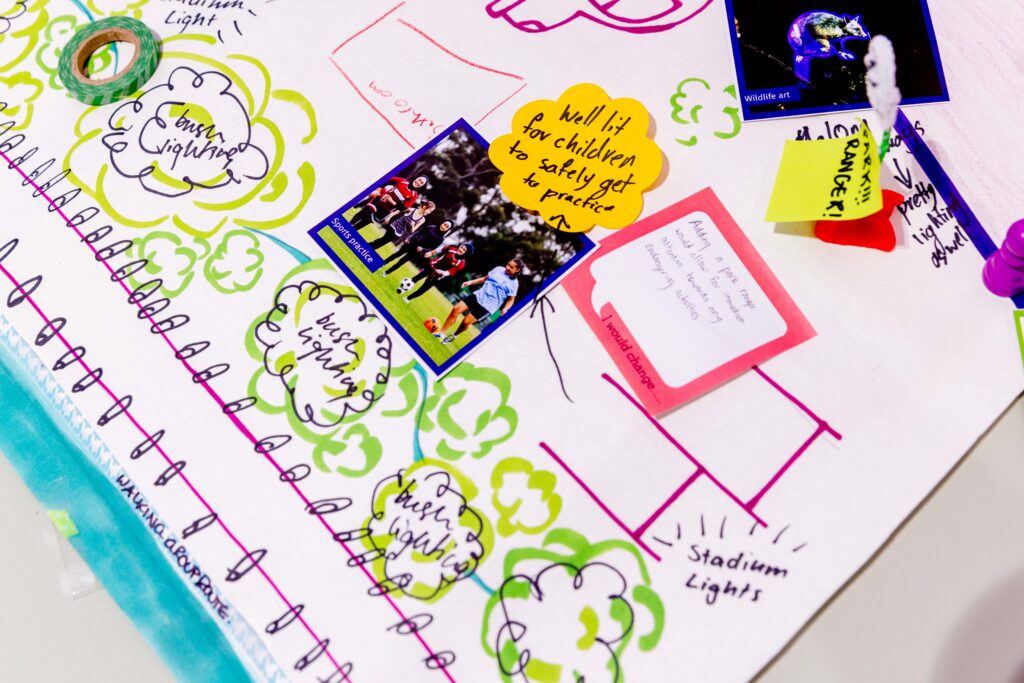
Ricardo Klein (Spain)
Ricardo Klein is a sociologist from the University of the Republic (Uruguay) and PhD in Culture and Heritage Management from the University of Barcelona. Professor at the Department of Sociology and Social Anthropology at the University of Valencia, where he teaches subjects related to sociology of culture, cultural policies and sociological theory. Visiting Professor at the Department of Sociology, University of Porto. President of the Research Committee on Sociology of Culture and the Arts of the Spanish Federation of Sociology. International consultant in Cultural Policies.
Lost and Found: Transnational Cultural Practices as Infrastructure for Memory, Reinvention, and Discovery in Transitioning Cities
Funded by Gerda Henkel Stiftung – Lost Cities Initiative, Germany
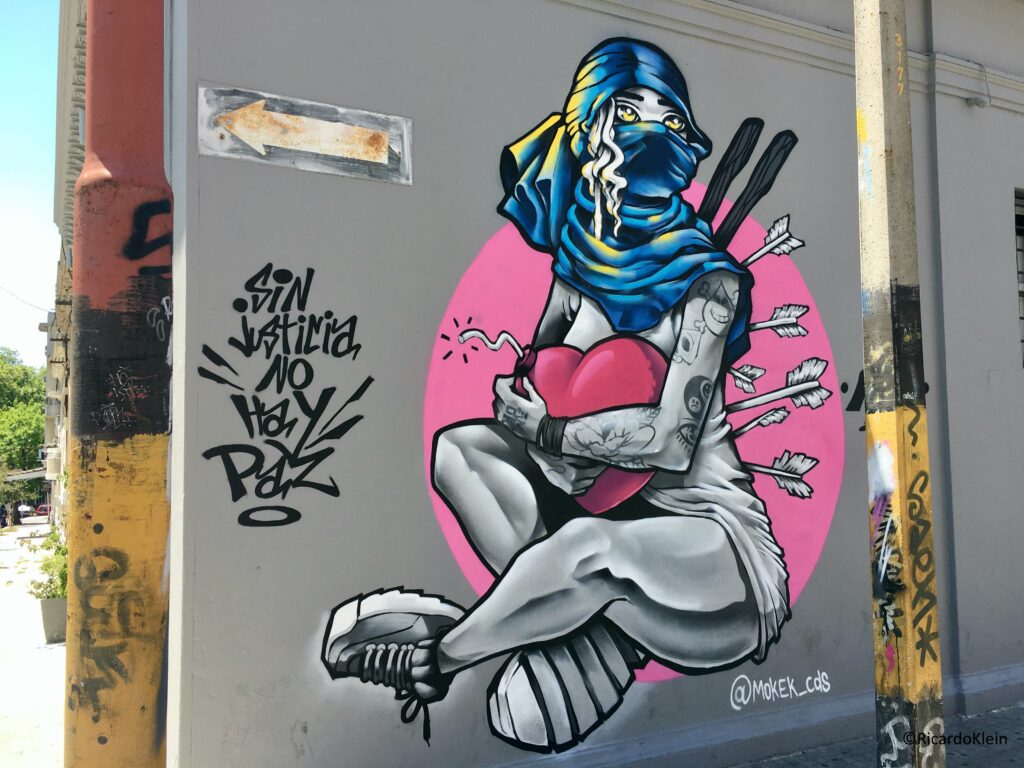
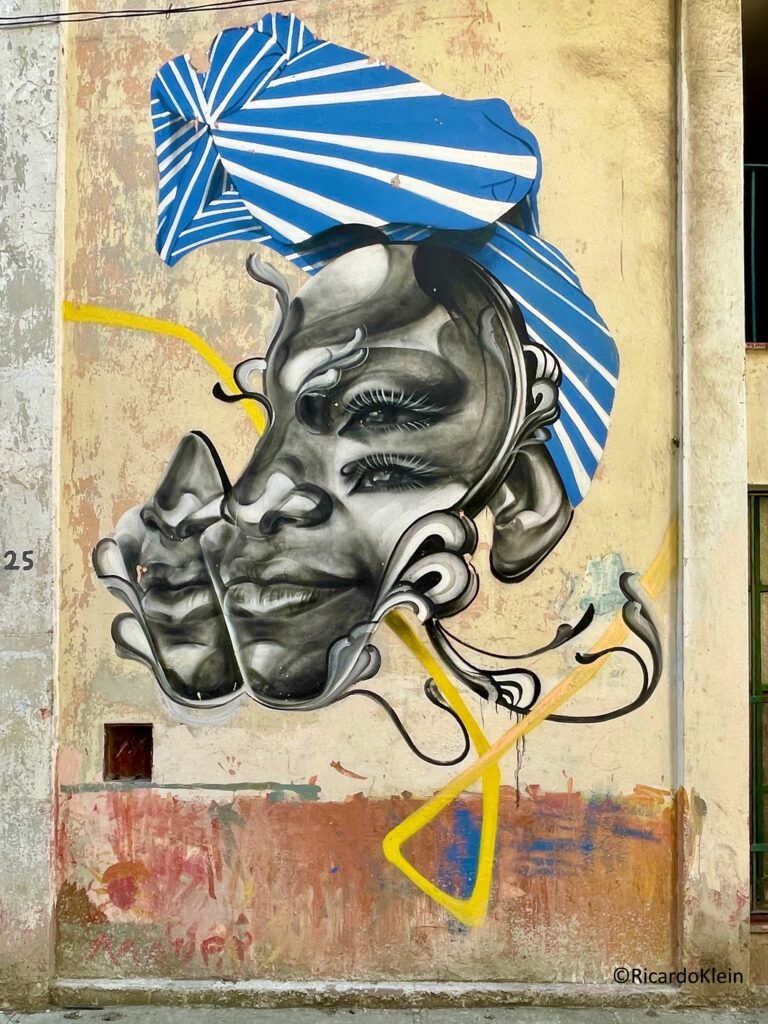
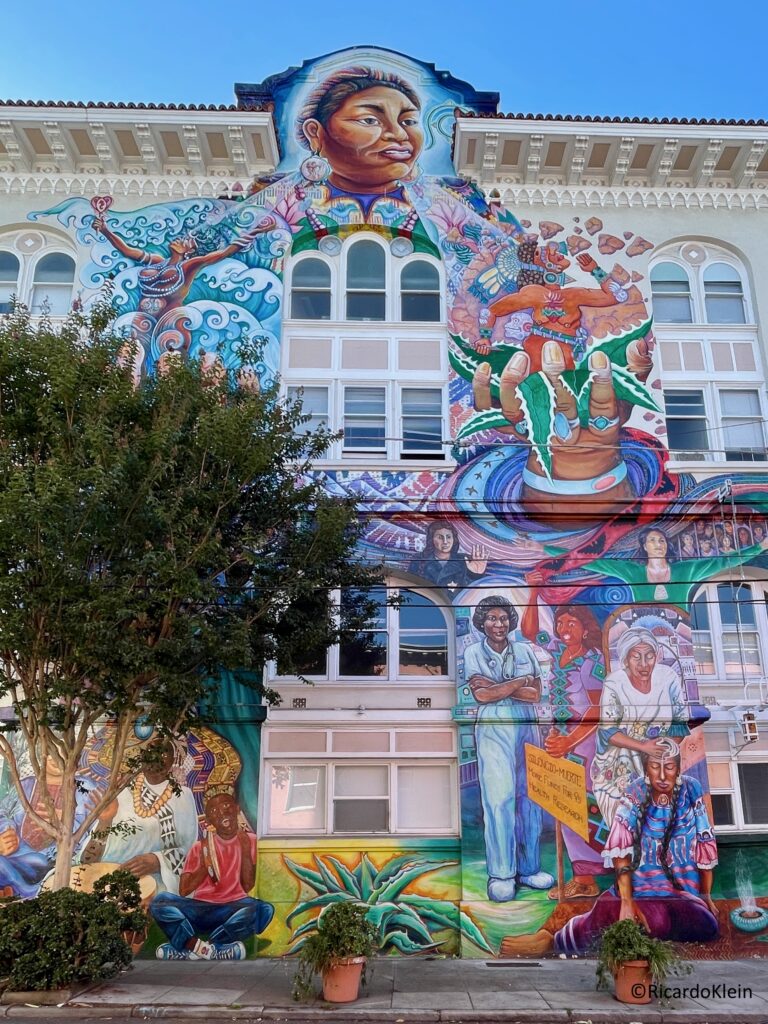
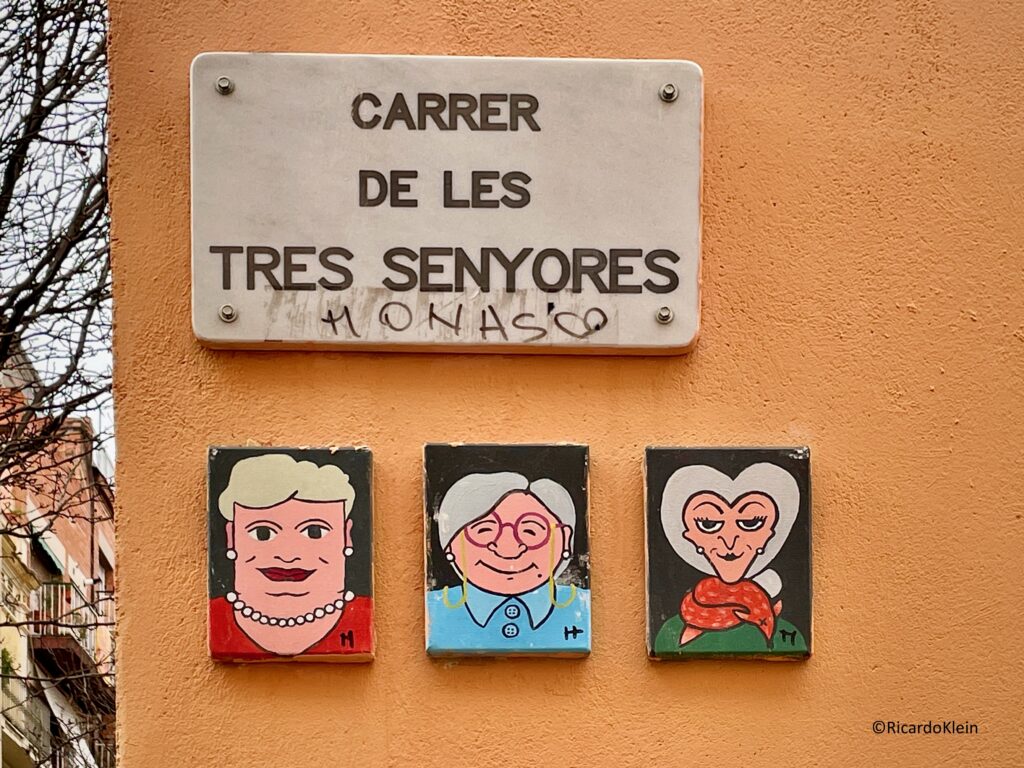
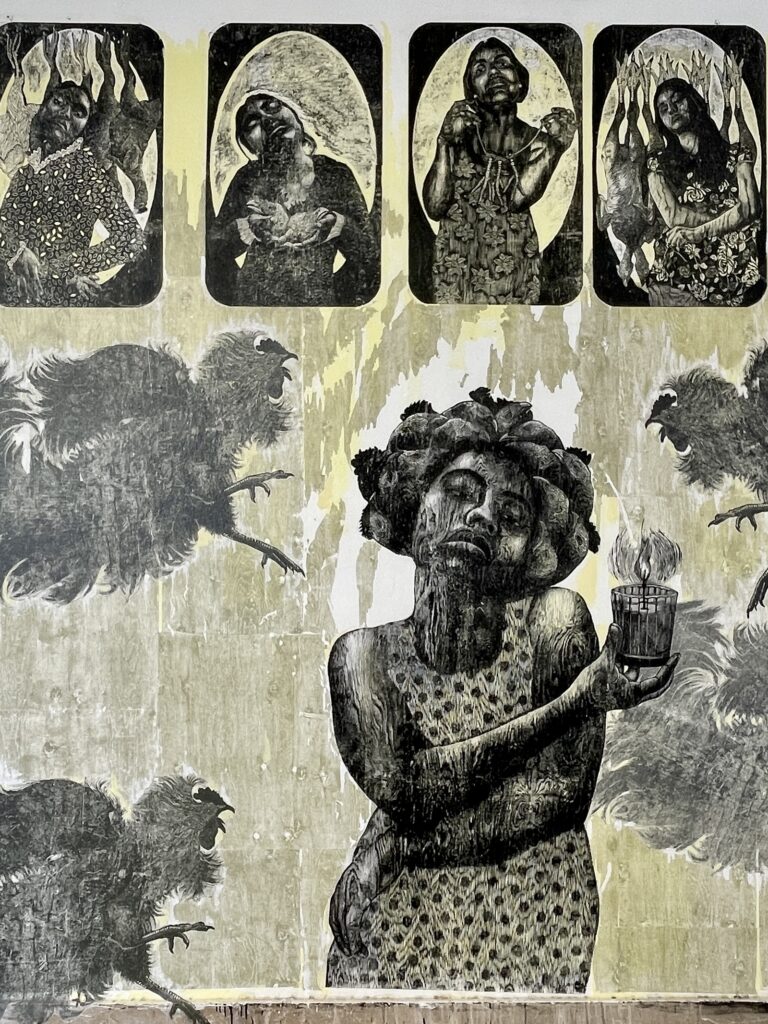
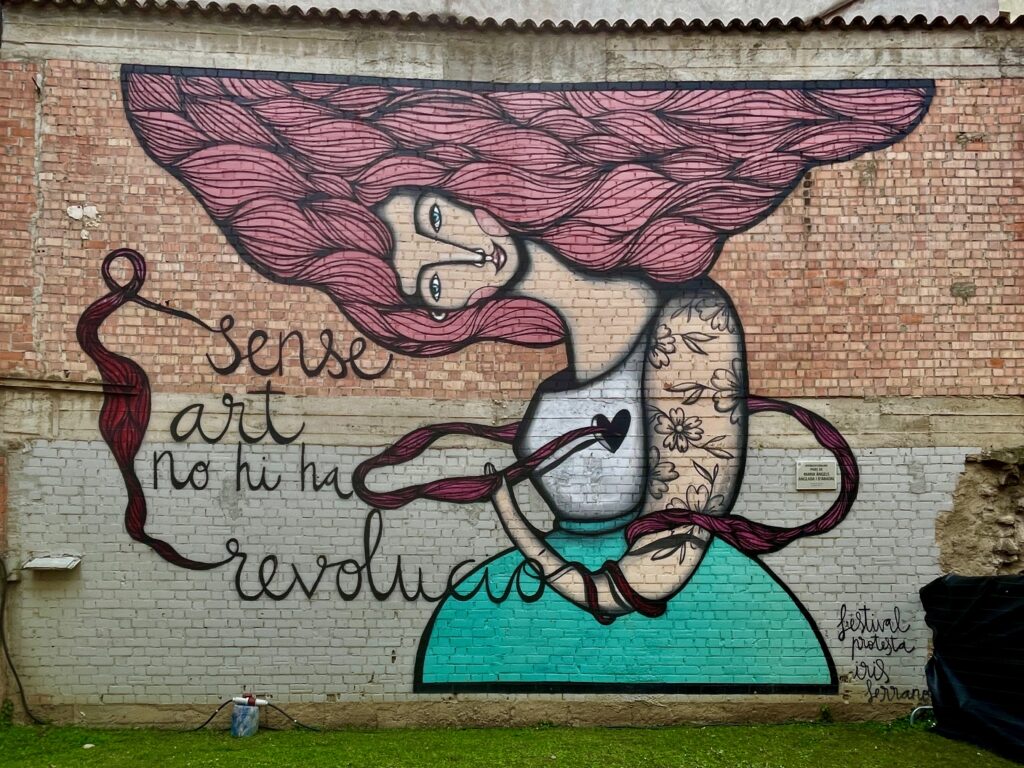
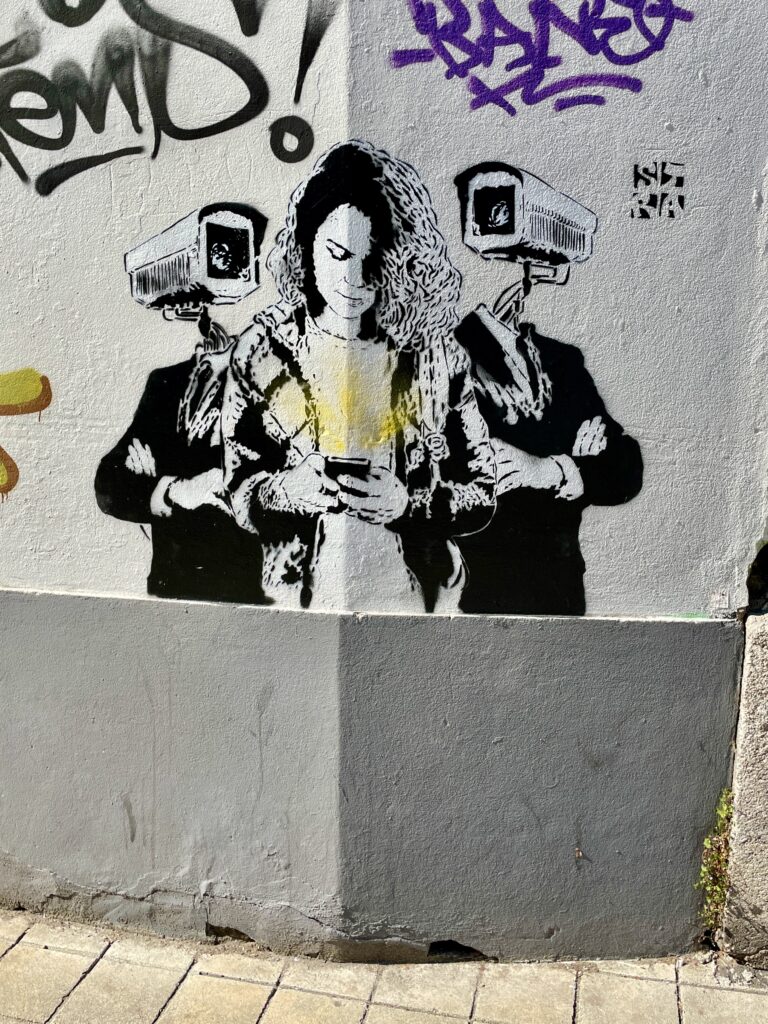
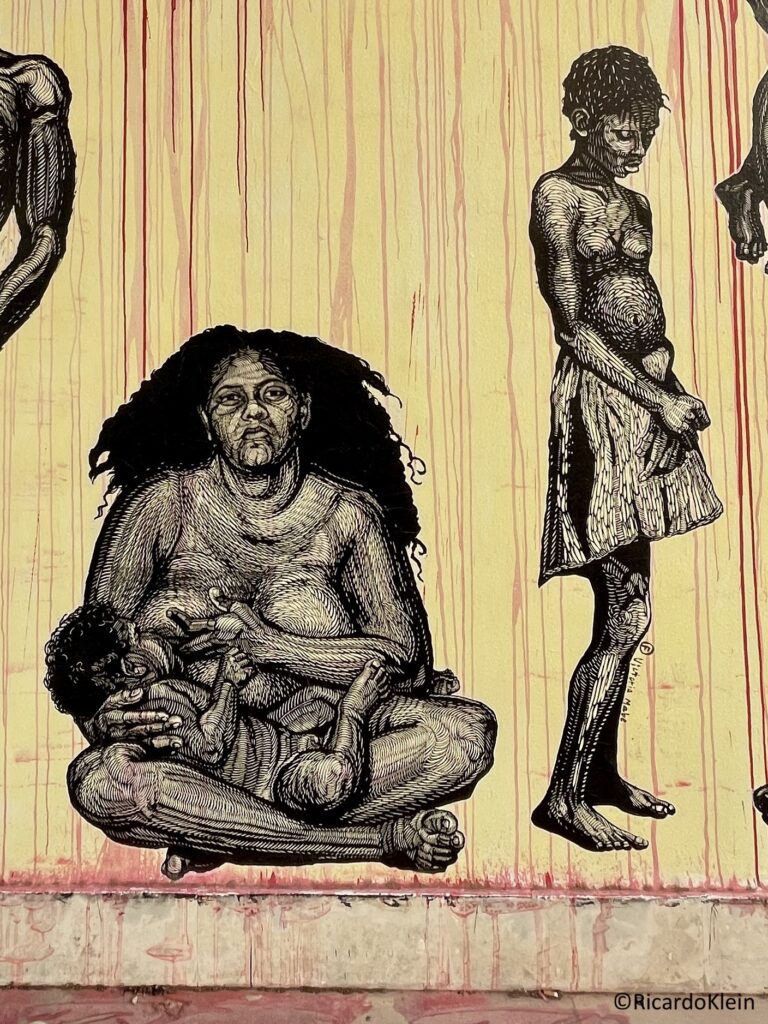
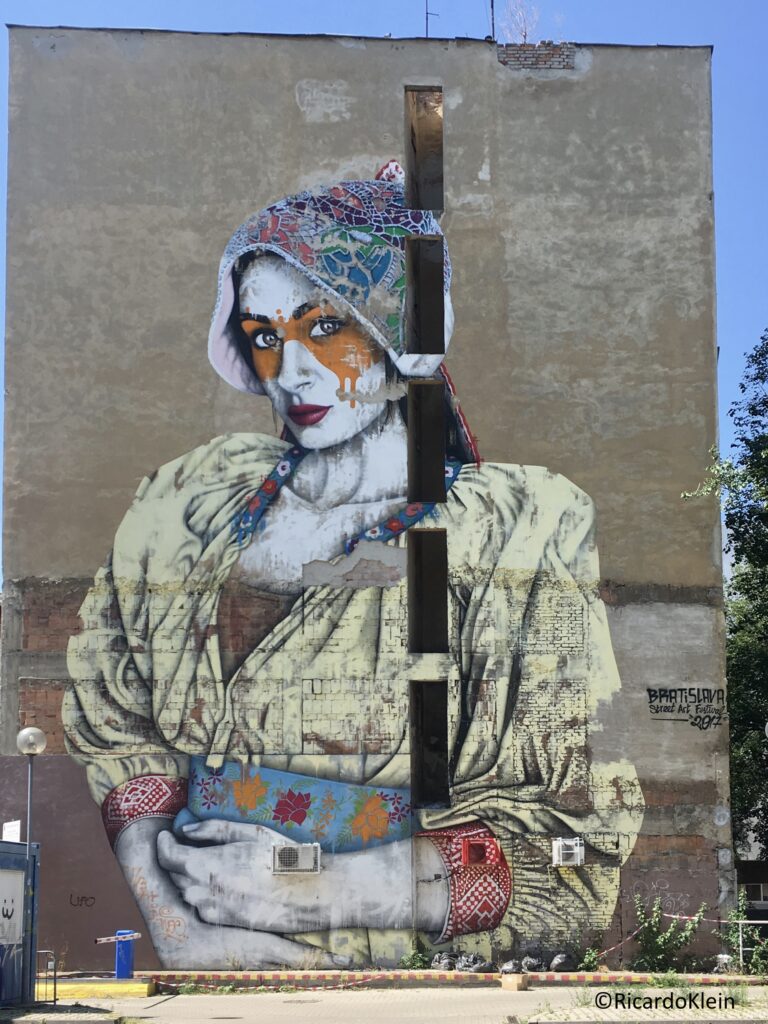
J. Antonio Lara-Hernandez and Abraham Echazarreta (Mexico)
J. Antonio Lara-Hernandez is an architect and urban researcher at the University of Porto. He was a distinguished member of the curatorial team of the Italian Pavilion at the Venice Biennale 2021, while he was the head of the Resilience Department of the Planning Institute of Mobility and Urban Territorial development in Yucatan. He was a co-founder of the IMPLAN-Merida (Municipal Institute of Urban Planning in Merida City). His research and professional experience include works in Mexico, Italy, Switzerland, New Zealand, Italy, and the UK. He focuses on research topics related to informality in the urban landscape, as well as studies on urban resilience and architectural exaptation.
Abraham Echazarreta is an Economist (Université Toulouse 1 Capitole) and Urbanist (UCL), he is the Head of the Department of Statistics and Geographical information at the Yucatan State Government. There, he promotes the digital transformation of state and municipal authorities, towards a data driven and evidence-based policy making. He has also led the drafting of legislation and public policies for sustainable mobility and urban development. His areas of expertise involve regional and local economic development policies; integrated land-use and mobility planning; and public sector data analytics.
Between lockdown and regeneration: Temporary appropriation, informality and displacement. The case of Merida, Yucatan
This research explores the relationship between the emergence of temporary appropriation (TA) as an informal use of public spaces; and the conjunction of lockdown and local mobility strategies to halt the worldwide pandemic. Lara-Hernandez and Melis (2018) conceptualise the term TA as people’s activities occurring in the public spaces different than the initial design purpose of the space. The research enquires on the role that long-term regeneration policies to market the Heritage City Centre have had on the displacement of TA practices; and the effect that emergency measures have had on the accentuation of these patterns. Intended as multi-disciplinary research, utilising an assemblage and resilient thinking approach, it selects Merida City Centre (Mexico) as a case study. Such context experienced a severe lockdown in parallel with a full over whole re-structuration of the urban mobility system, including a significant renovation of the streetscape design. A participant overt observation and activity mapping were carried out, parallel with land-use and socio-economic data analysis. The paper concludes that both assemblage and resilient theory could be used as a theoretical framework investigating such urban phenomena. It also illustrates a clear emergent organic self-organisation of the socio-ecological landscape, responding to the external pressures of lockdown and regeneration.
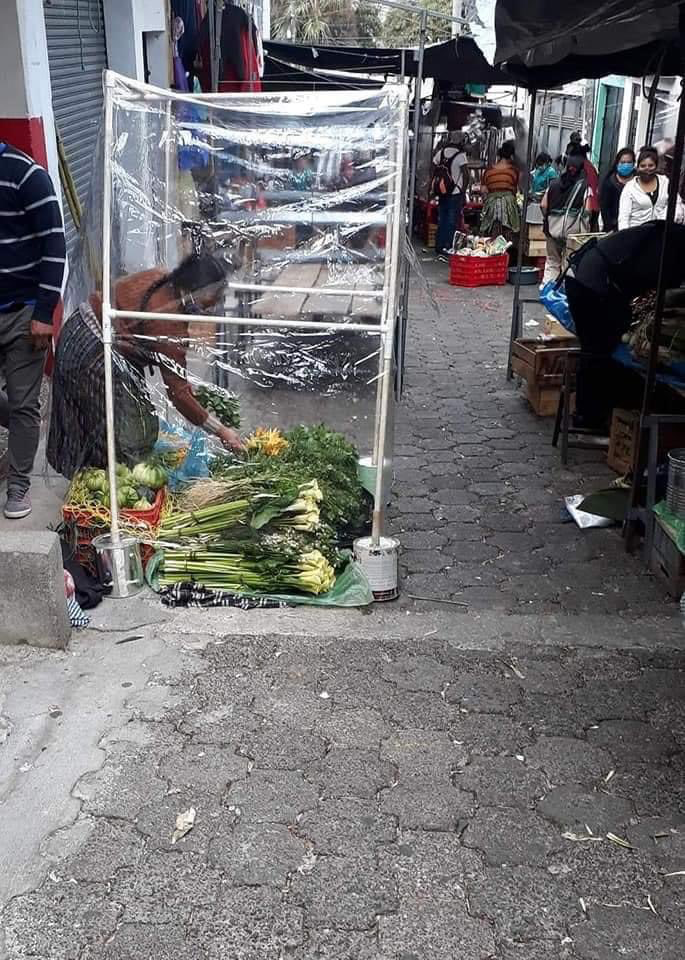
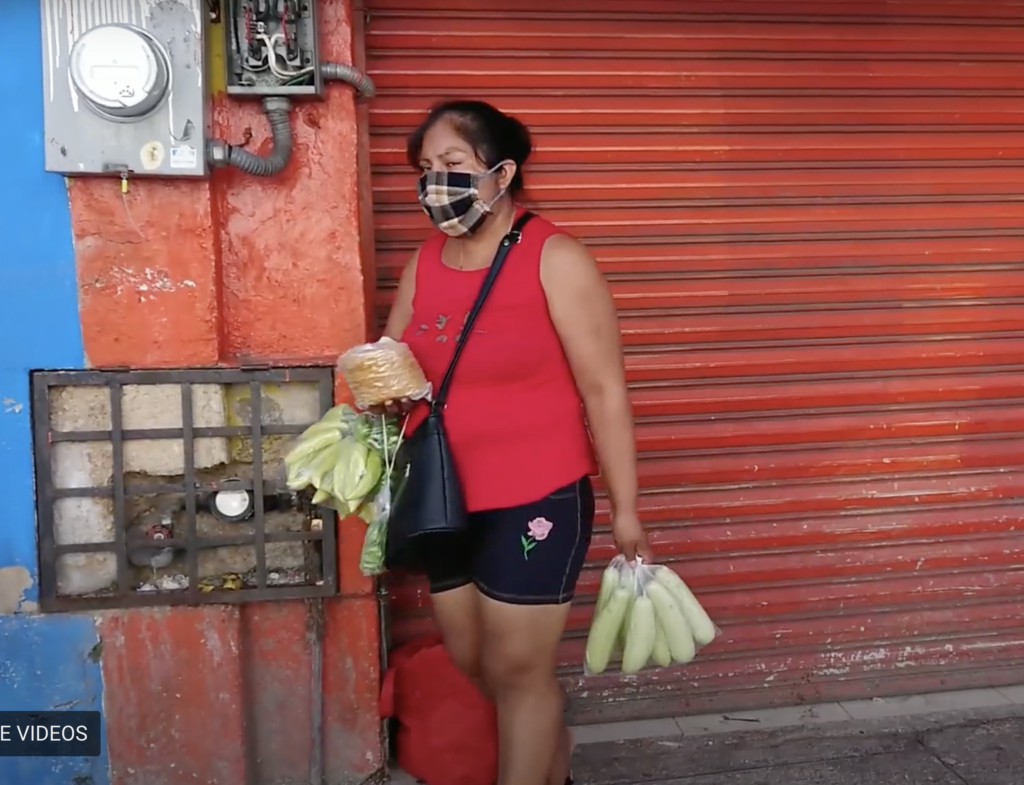
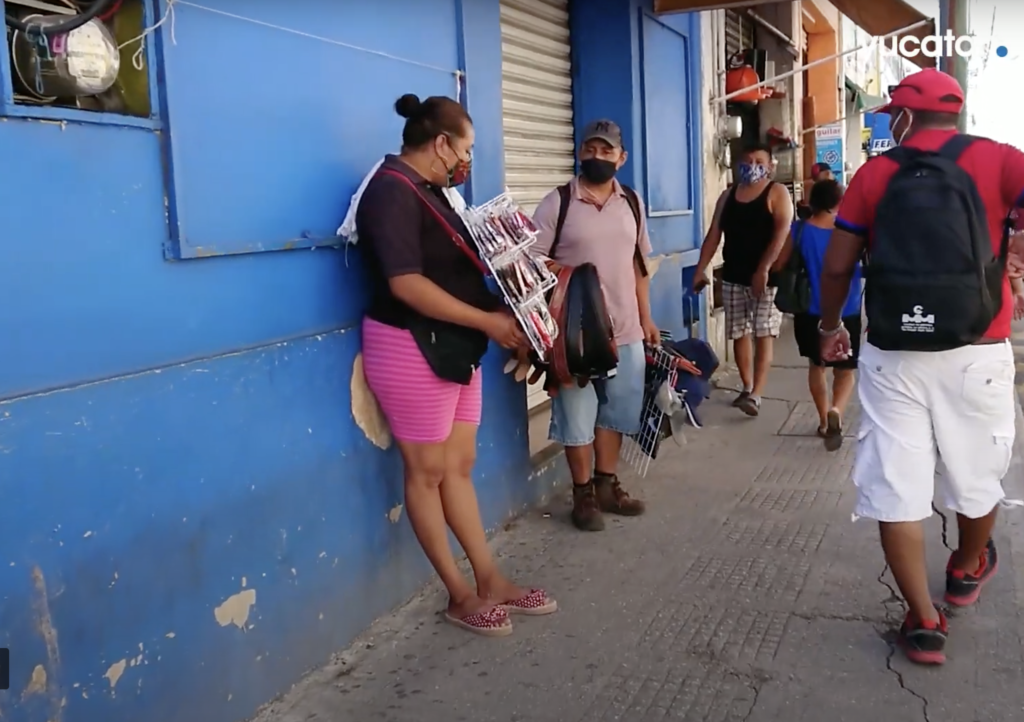
SriPallavi Nadimpalli (India)
SriPallavi is a researcher and an urban planner currently based in Bengaluru, India. As a consultant with a Think Tank in the area of Climate, Environment and Sustainability, she is currently exploring the interlinkages between climate change and migration. SriPallavi is broadly interested in applying an interdisciplinary and an intersectional approach to studying urban issues. Since 2009, she has worked in diverse capacities, including urban planning and research roles across multiple sectors, in India, Australia, and the United States. SriPallavi has a PhD from the University of Melbourne where her research examined the everyday spatial practices of Indian women migrants in India and Australia to understand their diverse expressions of place belonging. Her other research interests include gendered use of public spaces, everyday spatial appropriation, time-space mapping of everyday life and sustainable transportation. She holds a master’s degree in urban planning from the University of Illinois at Urbana-Champaign in 2009 with a prior training in Architecture from the Jawaharlal Technological University, India.
Migrant Belonging in Everyday Public Spaces
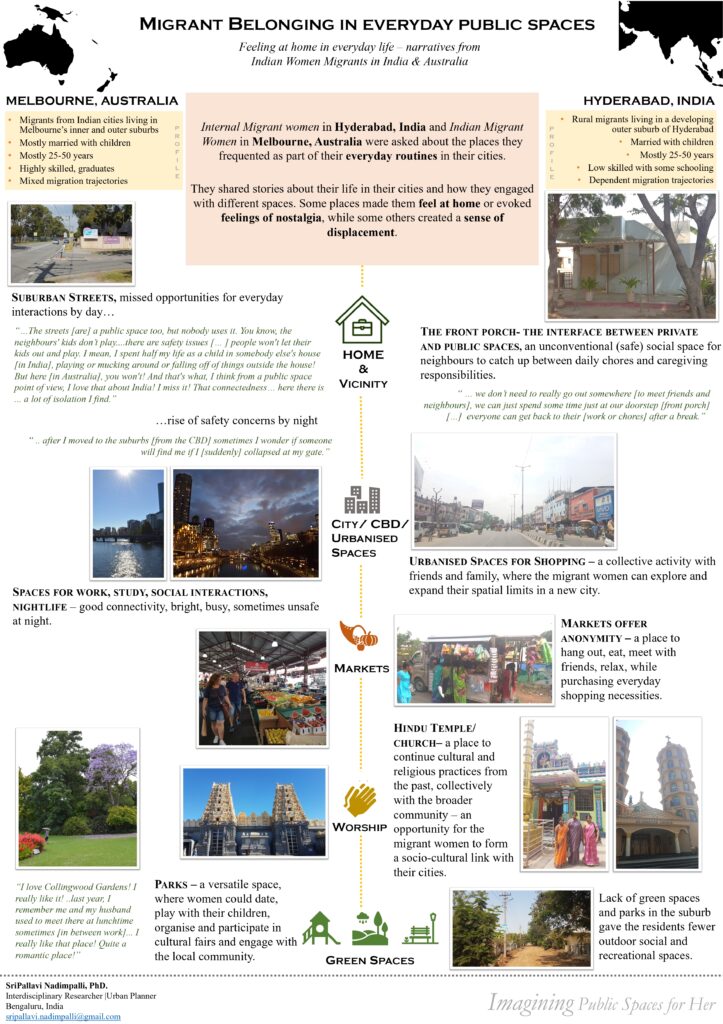
This poster presents some of the findings from Nadimpalli’s doctoral research completed at the University of Melbourne in 2021. The study examined the everyday spatial routines of two groups of Indian women– 20 internal migrants in Hyderabad, India and 19 Indian migrants to Melbourne, Australia. The aim was to understand how repetitive spatial practices and movements can contribute to the migrant women’s overall sense of belonging in their new homes. The spaces that were identified as significant in their lives (particularly as migrants and as Indian women), evoked both positive and negative experiences of belonging (or anything in between). Meanings were attributed to different spaces depending on how and with whom they engaged with these spaces, giving rise to multiple expressions of belonging. The physical characteristics and the typology of these spaces were diverse, where the boundaries between physical and public spaces were sometimes blurred.
Reactions
The exhibition was open to collect additional contributions from external researchers and professionals through the online survey “Is public space made with/for her?“.
In addition a box placed inside Museo Spazio Pubblico in Bologna was placed to collect further opinions from the local visitors, bringing their voice into the dialogue: visitors were invited to contribute to the campaign “I’m a Public Space Lover” promoted by City Space Architecture to celebrate the 10-year anniversary – read the news here – and to fill out postcards by completing the sentence “My favorite public space is …”.
It was a playful moment!
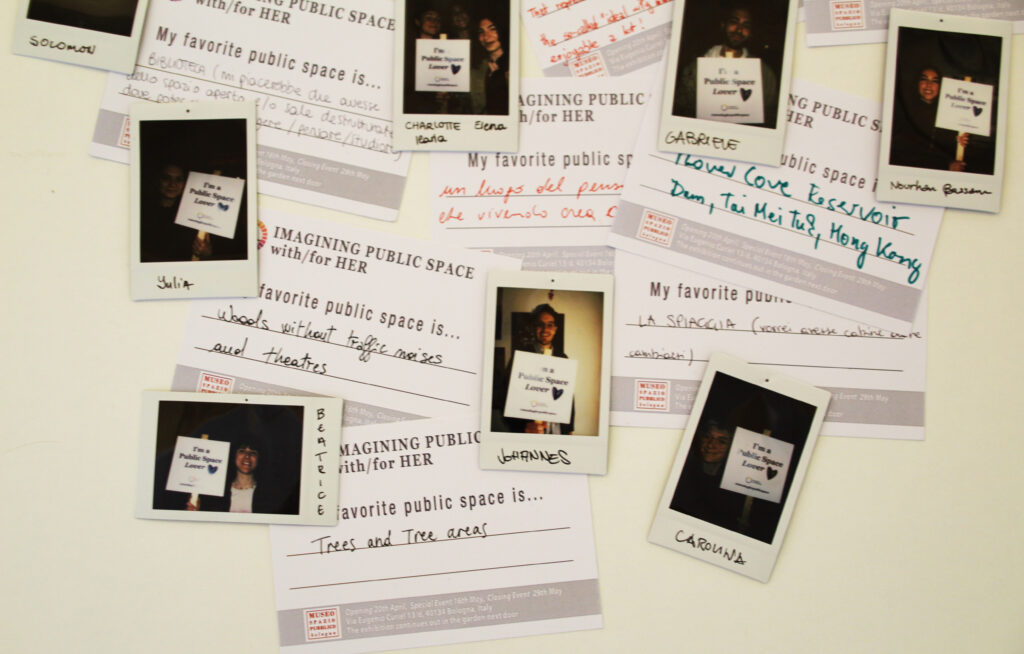
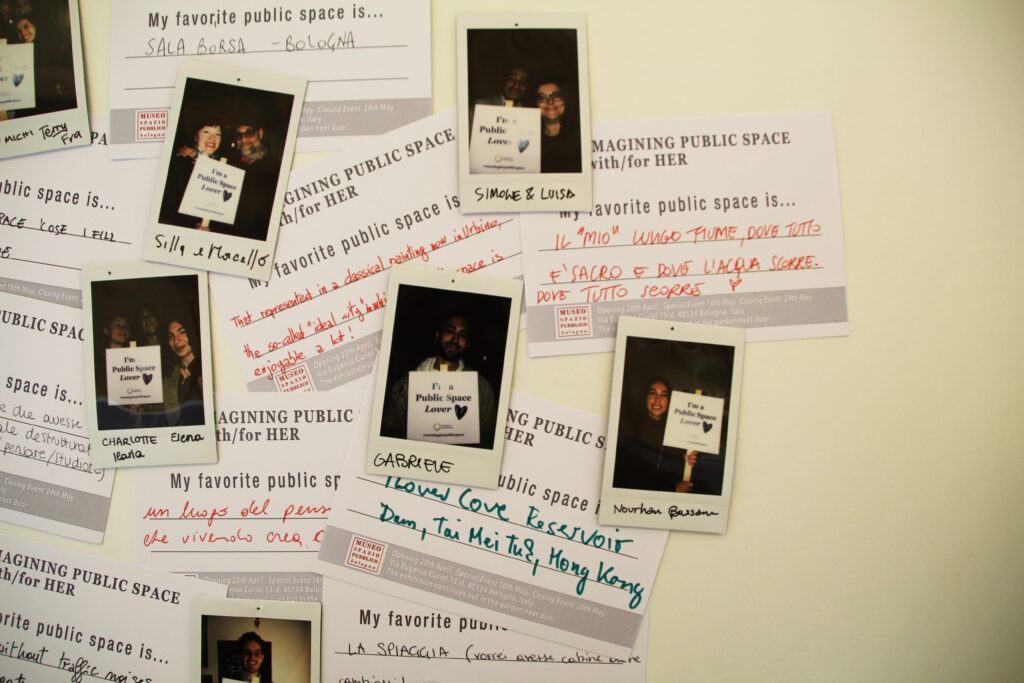
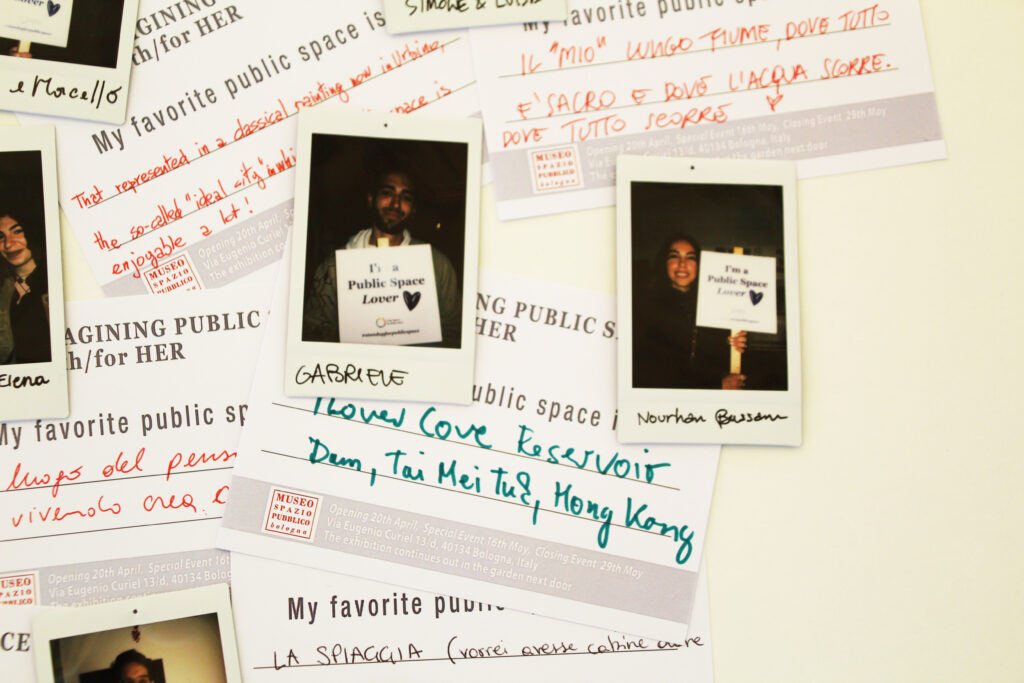
Read more about the exhibition:
Ricci, B. (2023) Imagining Public Space with/for Her – exhibition by City Space Architecture, Mastering Public Space [online].
Public Impact
In May 2023 the Metropolitan City of Bologna invited City Space Architecture to present the exhibition “Imagining Public Space with/for Her” at the conference aimed at discussing the outcomes of the first year of the implementation of the Gender Equality Plan.
The exhibition was held at Palazzo Malvezzi, a Renaissance-style palace located along Via Zamboni in the historic centre, one of the headquarters of the Metropolitan City of Bologna.
